#its a 1.5 second video
Explore tagged Tumblr posts
Text
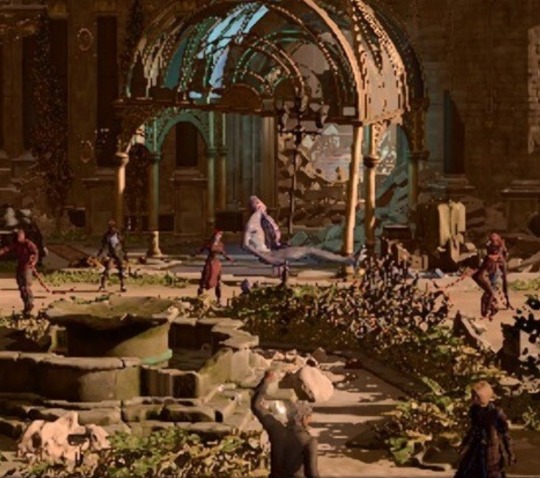

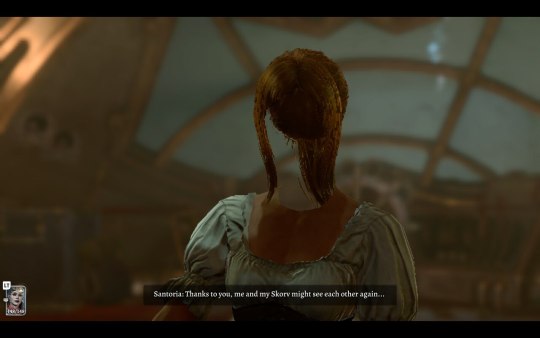
some of the screen shots I've collected showing some of my favorite bugs.
1st is a dead mind flayer hovering in the air over where he should be on the ground in the ending cinematic
2nd is a harper from act 2 displaying the jaw glitch that I thought was fixed but alas
3rd is one of the people needing rescued in act 3 who seems to be a bit of an air head I suppose
#baldur's gate 3#bg3#video game bugs#the dead mind flayer caught me so off guard#i wish i had a screenshot of when peoples heads were just turning into wet flesh blobs#and i had a recent one too that i didnt screenshot in time of after blowing astarion up in act 1.5#his soul echo or whatever its called spawns in next to me but for a split second hes there just completely naked#i even redid the whole scene trying again to get a pic but#i play on steam deck and there isnt a native screen recorder so i have to be quick with screenshots#i have another i want to share but again i can only take pictures#when i stand at a certain place in act 2 over a corpse with wyll in my party he starts to spin#no other companions will do it#like im crazy for u too bb but i dont think corpses make for good dance floors#my bg3 things
4 notes
·
View notes
Text
What baffles me about the Target drama right now is that people seem be forgetting that 1) kids have been walking past the lingerie department (and sometimes through is they're parent needs something from there) for DECADES without issue, and 2) basic fucking supply and demand means that Target has financial incentive to sell pride merch and pastel-colored boy's shirts because adults with money have expressed a desire to have them. There is no secret culture war agenda you goons it's just basic fucking economics. There is a demand for it so Target supplies it. Stop throwing a hissy fit over a pastel shirt and remember that you don't need to buy it.
#us politics#target#pride#ramblings#I saw a video of someone blatantly lying about swimwear and now I'm irate#if you use your brain for 1.5 seconds you'll clearly see that the swimsuit is too big to be a children's XS and that the pattern is only#available in adult sizes#its too early in the morning for me to be this pissed but here we are
5 notes
·
View notes
Text

When self-described “ocean custodian” Boyan Slat took the stage at TED 2025 in Vancouver this week, he showed viewers a reality many of us are already heartbreakingly familiar with: There is a lot of trash in the ocean.
“If we allow current trends to continue, the amount of plastic that’s entering the ocean is actually set to double by 2060,” Slat said in his TED Talk, which will be published online at a later date.
Plus, once plastic is in the ocean, it accumulates in “giant circular currents” called gyres, which Slat said operate a lot like the drain of the bathtub, meaning that plastic can enter these currents but cannot leave.
That’s how we get enormous build-ups like the Great Pacific Garbage Patch, a giant collection of plastic pollution in the ocean that is roughly twice the size of Texas.
As the founder and CEO of The Ocean Cleanup, Slat’s goal is to return our oceans to their original, clean state before 2040. To accomplish this, two things must be done.
First: Stop more plastic from entering the ocean. Second: Clean up the “legacy” pollution that is already out there and doesn’t go away by itself.
And Slat is well on his way.

Pictured: Kingston Harbour in Jamaica. Photo courtesy of The Ocean Cleanup Project
When Slat’s first TEDx Talk went viral in 2012, he was able to organize research teams to create the first-ever map of the Great Pacific Garbage Patch. From there, they created a technology to collect plastic from the most garbage-heavy areas in the ocean.
“We imagined a very long, u-shaped barrier … that would be pushed by wind and waves,” Slat explained in his Talk.
This barrier would act as a funnel to collect garbage and be emptied out for recycling.
But there was a problem.
“We took it out in the ocean, and deployed it, and it didn’t collect plastic,” Slat said, “which is a pretty important requirement for an ocean cleanup system.”
Soon after, this first system broke into two. But a few days later, his team was already back to the drawing board.
From here, they added vessels that would tow the system forward, allowing it to sweep a larger area and move more methodically through the water. Mesh attached to the barrier would gather plastic and guide it to a retention area, where it would be extracted and loaded onto a ship for sorting, processing, and recycling.
It worked.
“For 60 years, humanity had been putting plastic into the ocean, but from that day onwards, we were also taking it back out again,” Slat said, with a video of the technology in action playing on screen behind him.
To applause, he said: “It’s the most beautiful thing I’ve ever seen, honestly.”
Over the years, Ocean Cleanup has scaled up this cleanup barrier, now measuring almost 2.5 kilometers — or about 1.5 miles — in length. And it cleans up an area of the ocean the size of a football field every five seconds.

Pictured: The Ocean Cleanup's System 002 deployed in the Great Pacific Garbage Patch. Photo courtesy of The Ocean Cleanup
The system is designed to be safe for marine life, and once plastic is brought to land, it is recycled into new products, like sunglasses, accessories for electric vehicles, and even Coldplay’s latest vinyl record, according to Slat.
These products fund the continuation of the cleanup. The next step of the project is to use drones to target areas of the ocean that have the highest plastic concentration.
In September 2024, Ocean Cleanup predicted the Patch would be cleaned up within 10 years.
However, on April 8, Slat estimated “that this fleet of systems can clean up the Great Pacific Garbage Patch in as little as five years’ time.”
With ongoing support from MCS, a Netherlands-based Nokia company, Ocean Cleanup can quickly scale its reliable, real-time data and video communication to best target the problem.
It’s the largest ocean cleanup in history.
But what about the plastic pollution coming into the ocean through rivers across the world? Ocean Cleanup is working on that, too.
To study plastic pollution in other waterways, Ocean Cleanup attached AI cameras to bridges, measuring the flow of trash in dozens of rivers around the world, creating the first global model to predict where plastic is entering oceans.
“We discovered: Just 1% of the world’s rivers are responsible for about 80% of the plastic entering our oceans,” Slat said.
His team found that coastal cities in middle-income countries were primarily responsible, as people living in these areas have enough wealth to buy things packaged in plastic, but governments can’t afford robust waste management infrastructure.
Ocean Cleanup now tackles those 1% of rivers to capture the plastic before it reaches oceans.

Pictured: Interceptor 007 in Los Angeles. Photo courtesy of The Ocean Cleanup
“It’s not a replacement for the slow but important work that’s being done to fix a broken system upstream,” Slat said. “But we believe that tackling this 1% of rivers provides us with the only way to rapidly close the gap.”
To clean up plastic waste in rivers, Ocean Cleanup has implemented technology called “interceptors,” which include solar-powered trash collectors and mobile systems in eight countries worldwide.
In Guatemala, an interceptor captured 1.4 million kilograms (or over 3 million pounds) of trash in under two hours. Now, this kind of collection happens up to three times a week.
“All of that would have ended up in the sea,” Slat said.
Now, interceptors are being brought to 30 cities around the world, targeting waterways that bring the most trash into our oceans. GPS trackers also mimic the flow of the plastic to help strategically deploy the systems for the most impact.
“We can already stop up to one-third of all the plastic entering our oceans once these are deployed,” Slat said.
And as soon as he finished his Talk on the TED stage, Slat was told that TED’s Audacious Project would be funding the deployment of Ocean Cleanup’s efforts in those 30 cities as part of the organization’s next cohort of grantees.
While it is unclear how much support Ocean Cleanup will receive from the Audacious Project, Head of TED Chris Anderson told Slat: “We’re inspired. We’re determined in this community to raise the money you need to make that 30-city project happen.”
And Slat himself is determined to clean the oceans for good.
“For humanity to thrive, we need to be optimistic about the future,” Slat said, closing out his Talk.
“Once the oceans are clean again, it can be this example of how, through hard work and ingenuity, we can solve the big problems of our time.”
-via GoodGoodGood, April 9, 2025
#ocean#oceans#plastic#plastic pollution#ocean cleanup#ted talks#boyan slat#climate action#climate hope#hopepunk#pollution#environmental issues#environment#pacific ocean#rivers#marine life#good news#hope
7K notes
·
View notes
Note
GO OFF BESTIE SPANK YO MAN
THERE'S A REASON WHY I MADE THE GIF AND CAN'T STOP LOOKING AT IT

#fare thee ask#roamwithahungryheart#CAUSE I WISH THAT WAS M-#ITS 1.5 SECONDS IN A MUSIC VIDEO IM THRIVING I SW-
1 note
·
View note
Text
the thing abt me is i do hsve goals for therapy snd i do want to delve deep into my psyche but i also never get to talk to ppl irl so when i go in and realize i have a captive audience for the next 50 minutes i just cannot shut up.
#I NEVER CONSIDER MYSELF A CHATTY PERSON BUT THEN I HAVE AN OPPORTUNITY TO CHAT AND IM LIKE TEEHEE#i think im just selective abt who i talk to bc i truly am quite quiet. oh thats cute quite quiet theyre like sisters or cousins maybe.#but i am rly quite quiet i will legit just stand there like 🕴️and i never initiate conversations#but the second i realize somebody actually wants to listen to me talk isrg i suddenly have to recap everything that has ever happened to me#and my opinions on everything that has existed since the big bang occured#AND I TALK FAST SO I FEEL LIKE THAT KIND OF MAKES PPL NOT WANT TO TALK TO ME. BC YOU GIVE ME AN INCH OF INTEREST oh thats cute inch of#interest thats fun.. bc they sound kind of similar thats awesome. anyway you give me an inch of interest and i will take a mile of..#monologue ? closest m word related to talking i can think of but it isnt especially close to mile. oh well#but its literally so bad and then ppl dont want to talk to me bc ill talk for 30 minutes straight but the contents of the talk will be 1.5#hours worth i just talk rly fast and im constantly looping back to things i talked abt before and also leaping to things that are#tangentially related and basicslly . i think i am not very fun to talk to#i also told leslie abt my white man disease of thinking I could totally start a podcast. and she was like well normally i would say i think#they should make microphones cost 5000000 dollars to dissuade people from starting podcasts but i think i would enjoy listening to yours#which is tempting fate. i will not start a podcast#but also if i did she would hypothetically like it.. idt she so#would actually lisren bc i think thats kinda likee. yk its oversrepping the therapy boundary#it would not be an issue to me but i have heard that like. if a therapist hss a yter as a client they shouldnt watch that yters videos yk.#sooo unfortunately she wouldnt actually listento the podcast but yk. BUT I SHOULDNT MAKE A PODCAST IT IS MY INNER WHITE MAN SPEAKING.#idk why i said inner bc hes also outer i am a white semiman. semiman... itis mesnt to be prounced semi man (sim i man.. or sem e man if#you prefer.) but its also fun to read as simmuhman.
0 notes
Text
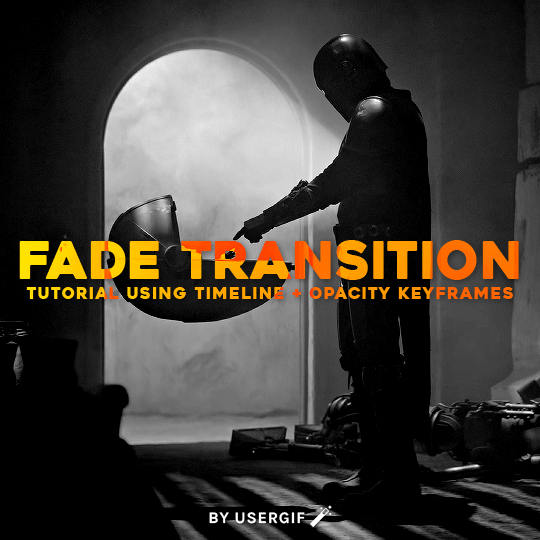
HOW TO: Cross-Fade Multiple Gifs
Hi! In this tutorial, I'm going to go over how I typically do a fade transition that works with Video Timeline. Disclaimer: This tutorial assumes you have a basic understanding of gif-making in Photoshop and requires the use of keyframes.

Before I start, if you're wondering "why don't you just use the cross fade tool on the Timeline?" — this thing:
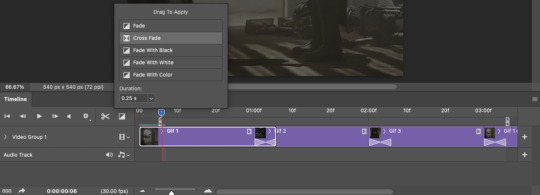
It doesn't work for me 🤷🏻♀️ Something happens when converting from Video Timeline back to Frame Animation (the converting everything into a smart object step) that completely negates the cross fade whenever I use it. I'm not sure why, but this is why I do fade transitions the way I'm about to explain.
PHASE 1: THE GIFS
1.1 – Determine how many frames you need. There are 3 things to remember here: 1) Ideally, each gif section should have the same amount of frames, so the transitions feel evenly spaced. 2) The gif's dimensions and total number of frames affect file size. Your final exported gif needs to be under 10MB (Tumblr's limit), so you should consider the total number of frames in relation to the size of your gif. My example gif is 540x540px and 60 frames total; final file size = 7.8MB. 3) Add 4 extra frames to each section to account for the cross-faded portion. (The reason I chose 4 specifically is because Video Timeline works in 0.03-second intervals. The typical duration of my fade transitions is 0.06 seconds — which, when converted back to frames, is 4 frames.) I knew 60 total frames would be a safe bet for a gif this size. Since I had 3 gif sections, each would be 20 frames. I added 4 additional frames, making each one 24 frames (before removing duplicates in the exporting process, which will be explained in Phase 3). You can make your transitions longer than 0.06, but I recommend keeping it to intervals of 0.03 due to the way Timeline works. Every 0.03 seconds = 2 frames, so use this when deciding how many extra frames you'll need.
1.2 – Import frames, crop, and resize. Do this as you normally would! If you need a tutorial for the basics, here's my tutorial. :)
1.3 – Move all gifs onto one document/canvas. Right-click the gif layer and select "Duplicate Layer:"
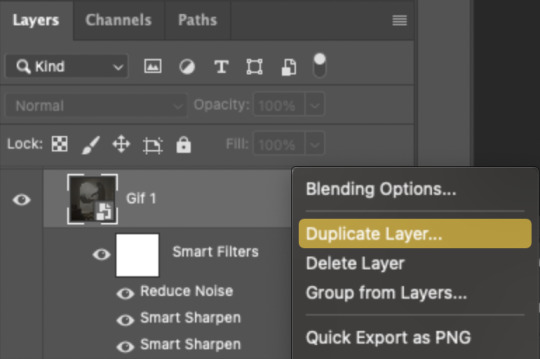
Then choose the appropriate document from the dropdown list:

Do this for each gif section so you can work on one document for the rest of the process.
1.4 – Put each gif into its own group. Select each layer and use the shortcut Command+G or right-click and select "Group from Layers." In Phase 2, we'll be putting the opacity keyframes on the groups instead of the individual layers.
1.5 – Arrange each gif's group on the Timeline. At the end of Gif 1, move backwards 6 times. Move the starting point of Gif 2 to this spot. At the end of Gif 2, move back 6 times and make this Gif 3's starting point. Here's how my gifs look arranged on the Timeline, animated so you can see the 6-space distance:

We'll be adding keyframes to these overlapping sections in Phase 2.
1.6 – Set up the last transition. At the very beginning of the Timeline, hit the forward button 6 times and click the scissors to divide the clip. Move the starting point of your gif to the newly trimmed beginning as shown below:
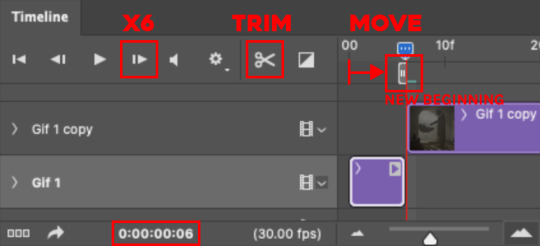
Then, move the original beginning chunk of Gif 1 — that tiny 0.06-second clip — to the end of the timeline above the rest of your layers, aligning its end with the end of Gif 3. Put it in a group like you did in Step 1.4:

Note: This screenshot shows my final workspace with the coloring layers in groups and the keyframes already placed.
1.7 – Color your gifs. Do this however you want, just keep all your adjustment layers and any other effects within their respective groups:
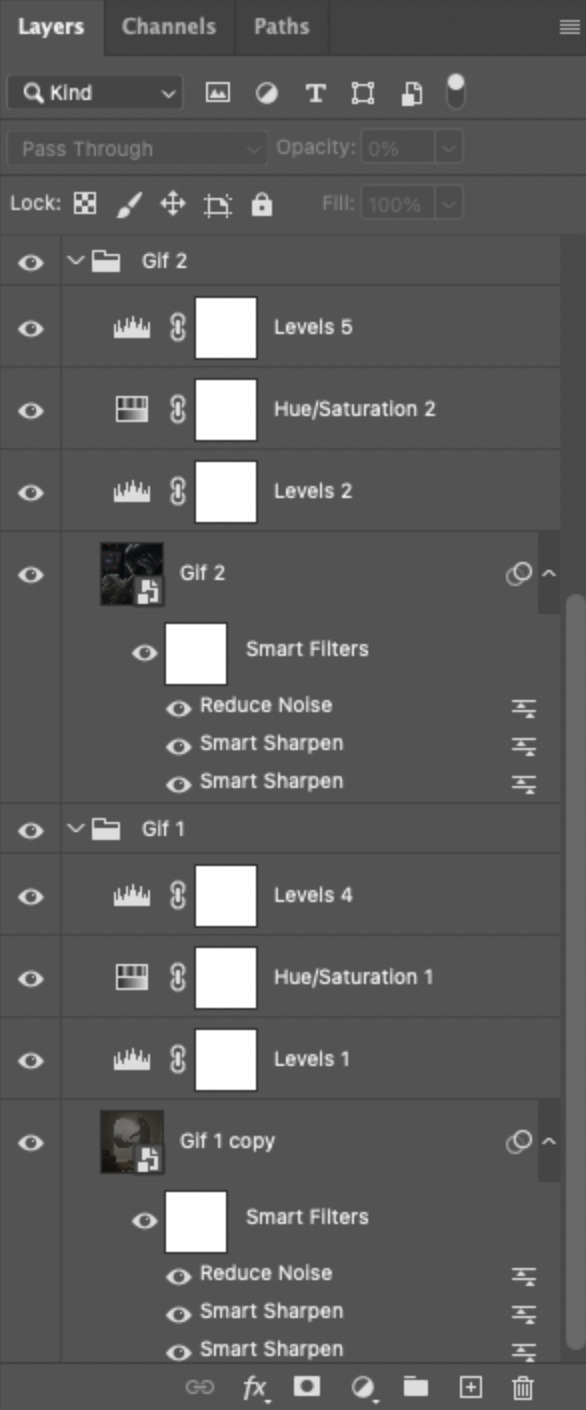
Duplicate the adjustment layers from Gif 1 and move them into the folder Gif 1 - Beginning (where your tiny 0.06-second clip is). Be sure the adjustment layers line up with the rest of the group so those adjustments don't affect your other gifs! You may want to trim the adjustment layers to match the duration of the clip or just move them so they start at the same spot as that clip.
PHASE 2: THE KEYFRAMES
2.1 – Place a 100% and 0% keyframe at the beginning of each gif's group. Drag the playhead (red vertical line) to the end of Gif 1. Expand the Gif 2 group to reveal the opacity keyframes on the left side of the Timeline panel, then place a keyframe by clicking the icon that looks like a stopwatch. This opacity keyframe is at 100% by default; leave it like that. Drag the playhead to the beginning of Gif 2 and drop another keyframe. While that new keyframe is highlighted yellow, go to the layers panel, make sure Gif 2's group is selected, and reduce the opacity to 0%.
Repeat these steps for each gif's beginning, including the tiny chunk we moved to the end! Here's a gif to show the process:
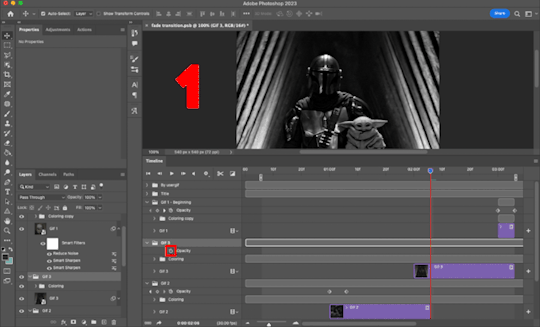
(Btw, if you click this gif, it should expand to full size so you can get a better look! I made it 1080px.)
PHASE 3: THE DUPLICATES
3.1 – Convert back to Frame Animation. If you're not sure how to do this, I've written out the steps here. But I recommend using an action in your general gif-making process to make this step a lot faster. The one I use is linked in my tutorial which I linked earlier!
3.2 – Delete duplicate frames. Remember, at the beginning I set out to make my final gif 60 frames total. With the keyframe animations, I now have 66 frames:

Palpatine's number 👎 Anyway, that means I have 6 duplicate frames. This is what the gif looks like without removing these duplicates:

Watch closely during the transitions; there's a tiny lag. It doesn't look smooth to me. It's the clones!! Here's why we have these duplicates:
For every 0.03-second long keyframe animation, you'll get 1 duplicate frame. Unfortunately, that's just how Video Timeline works with any kind of animated keyframe. Since our fade transition is 0.06 seconds, we have to get rid of 2 duplicate frames per transition section (2 x 3 transitions sections = 6 total duplicates. Ew, math!).
There's not really a way to avoid this step that I know of, but it's not a big deal in the long run. You just have to look at each transition section, eyeball the duplicate frames yourself, and delete them. It's usually the first frame where the fade starts and then two frames after that. I already deleted the duplicates from the first two transition sections, so here's how it's done for the last transition:

Side note: I set up keyboard shortcuts so I can quickly move forward and backward by one frame and delete frames. You can do this by going to Edit > Keyboard Shortcuts and editing these:

And now I have 60 frames like I originally said I would!

If you want the transition sections to be quicker, you can even decrease the frame delay for the 3 transition frames only — 0.03 or 0.04 might be up to your speed 🥁 but I don't usually do this since I'm fine with the way it looks already.
3.3 – Export. That's it!

I hope this tutorial is helpful. As always, if you have a specific question about this tutorial, feel free to send us an ask!
#gif tutorial#fade transition#transition#completeresources#usershreyu#userelio#userzaynab#userives#usertreena#userrobin#userkosmos#userhella#alielook#uservivaldi#tuserabbie#tusermona#tuserlucie#*usergif#*tutorial#by nik
564 notes
·
View notes
Note
Hello wonderful mutual
*deep breath*
Would you mind explaining what AvA is? I keep getting stuff abt it you reblog on my dash (not that I mind- the fanart is great =))
oh hello this is interesting. special interest time !!
AvA stands for Animator vs Animation. it originally started as a two minute long animated short film by Alan Becker, featuring a stick figure called victim and the animator that created it. the original film was published on newgrounds in 2006. later two more were made, featuring The Chosen One [Chosen] (in ava 2 and 3) and The Dark Lord [Dark] (only in ava 3). the story of these two continues from 2 to 3, starting with Chosen's creation. in being named The Chosen One, he comes to life a lot more powerful than victim had. similar to victim, he immediately starts to fight with his creator (called Noogai3), and also like victim, said creator doesn't give two shits about his wellbeing. once Noogai3 beats Chosen in their fight, he captures Chosen and forces him to be an adblocker. later, Chosen escapes, and Noogai3 creates Dark to deal with him. only problem is Chosen is significantly stronger than them. and when Dark realises Noogai3 doesn't care what happens to them as long as they do their job, they team up with Chosen and the two of them work together to bluescreen Noogai3's computer .
this is where the series was originally going to end, but in 2014 (three years after ava 3), the fourth episode was released. [im not going to go through the plot of any more episodes, but i will give you a timeline of episodes and full series watching order at the end.]
in 2015, the original Animation vs Minecraft was released. this later became its own side show, which is ironically longer than the original main show, at 36 episodes across four seasons. the fourth one actually just ended. season three is by far the best of them, with a plot arc that spans 11 episodes that includes emotional character development, great music, and a character backstory that they kind of gave us out of nowhere but yk. you win some you lose some.
the main show Animator vs Animation picked up again in 2018 for a second season, which is comprised of four episodes. however, they were originally just parts of one episode (5), and even though it was like a year ago, im still getting used to that change lol. this season features the return of Chosen and Dark after not hearing about them for seven years. in 2023, the third (and still ongoing) season started. and im not giving any spoilers for that one.
this whole time, there have also been side videos titled Animation vs [game or other subject]. none of these videos are technically required to watch and don't do much for the whole series plot, except Animation vs League of Legends, which takes place somewhere between the first and third seasons of AvM. there's also a three episode side series called the Influencer Arc where a character does exactly what you'd think based on the title. also cool but not required.
if you're planning on watching AvA (the whole series is on youtube, channel name Alan Becker), your best options are just watch the Animator vs Animation series [~1.5-2 hour watch time], or go in this order (only covers the essentials).
AvA 1-4 , AvM (original) , AvM season 1 , AvLoL* , AvM season 2* , AvA 5-8* , AvM season 3 , AvA 9-11 [note that there are more coming for this season]
*as far as i know, the order if these can be switched around as long as they're all between Animation vs Minecraft seasons 1 and 3.
yeah that's it thanks for listening
11 notes
·
View notes
Text
Ranking MLP Generations!💗🦄🌈

For over 40 years, we have been exposed to colorful horses. Colorful horses who can talk....and sing....and dance....and fire mega rainbow lasers at their enemies! Colorful horses who also made their way into our collections. My Little Pony was introduced in 1982 following after the original My Pretty Pony toy that dropped in 1981 which was meant to sell toys for the young female demographic.

The rest became history! MLP grew to become a popular toy during the 80s which spawned a movie in 1986 and a TV show that came out three months later. As the years went by, MLP went through multiple changes gaining new fans for new generations. I've decided to go over each generation and rank them based on my opinions, thoughts, and overall feelings of satisfaction I have toward them. I don't necessarily hate any of the generations that will be placed lower on this list, I just don't feel as attached to them nor do I feel like having an interest in them. I also won't discuss much of the toys, but I will discuss heavily on the TV shows based on them since I've seen more of the shows than I collected the toys. We'll start with the worst, then save the best for last. Let's go, everypony!
8. My Little Pony Generation 2

The fact that I didn't even know this existed until years later doesn't help its case. The toy sales were so low that there wasn't even a cartoon to go with it. Only a video game. This generation released in 1997 before it ceased distribution in 1999 due to lackluster sales. However, it did find some success in Europe. I don't have much to say about this since I hadn't known about it. I originally thought My Little Pony Tales was Generation 2! One positive I can give is that I love the designs as they give off slightly more realistic horse-like features and it's a cool look. I didn't have any toys nor saw anything on TV with there being no series. I'm sorry, G2! Unfortunately, you hit the bottom of the barrel.
7. My Little Pony Generation 3.5

Now, this spot is interesting! The third generation of MLP dominated the 2000s with newer colorful ponies like Pinkie Pie and Minty. On top of that, multiple specials began selling in DVDs that also aired on TV. By late 2009, Hasbro decided to revamp the series twice (sort of). They gathered a group of ponies who were well known in G3 (Pinkie Pie, Starsong, Rainbow Dash, Cheerilee, Toola Roola, Sweetie Belle, & Scootaloo) and gave them a redesign as well as likely aging them down for younger audiences. There was a 45-minute holiday special titled, Twinkle Wish Adventure as well as a couple mini episodes and new toys that spawned from this revamp.

It eventually led to the second revamp titled, Newborn Cuties where the characters aged down to babies....you had to see it to believe it. I actually owned a G3.5 Pinkie Pie, a Newborn Cuties Pinkie, and a baby singing Starsong back in the day. These redesigns couldn't do it for me after being mesmerized by G3. I remember being upset that even Ponyville got a redesign and it looked so bland compared to how the town looked early on. Newborn Cuties also looks extremely off with their pony heads and baby bodies. This generation is mostly hated by the fandom and I can see why. At least, it had more to offer than Generation 2. It was a nice distraction for young girls. It's now best to be left alone by an older me. If any of you like seeing fillies and baby ponies, this is the generation for you.
6. My Little Pony Generation 1.5/ My Little Pony Tales
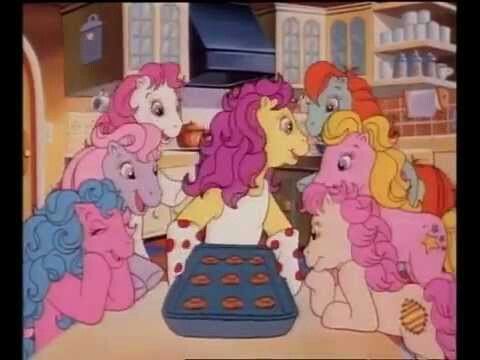
Let's go back to the year, 1992! You're sitting in your room and you're watching, Disney Channel. You're watching your favorite shows like, Goof Troop, The Little Mermaid, or Raw Toonage and you come across this colorful horse show. After Generation 1's series came to a close in 1987, we are now hit with a new series for pony fans in the 90s. This is the generation I previously thought was Generation 2. That is in fact not the case! We follow a group of pony friends as they spend their days in Ponyland going to school, hanging out for milkshakes, having sleepovers, and feuding with the resident boys. Our main ponies are Starlight, Sweetheart, Melody, Bright Eyes, Patch, Clover, and Bon Bon whom we follow in their daily lives. I find this show to be.....innocent, but weird (and not in a good way). It's passable for a Saturday morning cartoon and it does have funny moments, but something was off.

Generation 1 left quite the impression on young audiences during the 80s. Ponies that not only sung and danced, but ponies that went through continuous magical adventures involving dragons, princesses, witches, evil kings, and all sorts of mythical creatures. My Little Pony Tales has talking and singing ponies, but there was an odd lack of magic with the show emphasizing more on Slice-of-Life. Not that I have any issues with that genre! It just feels odd seeing these magical horses not doing any magic and living in a modernized world. The characters also have annoying moments which is likely because the writers wanted to portray preteen behavior (since the ponies are preteens in this show), but it also falls into some cheesy 90s writing. Like I said, it is passable so I believe there's an audience for this one. It can make nice riffing material too!
5. My Little Pony Generation 4.5/ Pony Life

Here are the table scraps of My Little Pony: Friendship is Magic....except, these table scraps were pretty okay. This show came onto streaming services and YouTube from November 7, 2020 until May 22, 2021. This was supposed to be a successor, spin-off, and reboot to FIM. The previous show had already ended, so I was chill with seeing the characters again in a different style. This generation was.....bonkers, to say the least! It was already kind of a struggle seeing fans adjust to the new chibi art style, but it was also a struggle keeping up with the show's new format. Pony Life was incredibly energetic as each episode was around 5 minutes (10 since they're in two-parts). There was also some crazy new quirks to the cast with Applejack breaking The Fourth Wall, Fluttershy shrinking and massively growing at will, and everyone casually drinking potions left and right. For me, it was hard to keep up with the fast pace of the show. However, I did appreciate the cast of The Mane Six reprising their roles for this show.

Season 2 introduced viewers to Lightning Flash Chill (the tiger), Sugar Snap (the peacock), and Echo (the bat). Meet The Wild Siders! They're unicorn-hybrid creatures who work at a healthy food restaurant called, Salad Bowl Junction in their home realm. I honestly enjoyed them! They give off similar vibes to The Care Bear Cousins which is fascinating because the 80s actually did a spin-off toyline with a similar premise by having other pretty animals. There have also been episodes where characters from the previous series make an appearance such as Spike, Trixie Lulamoon, and Discord. I enjoyed this more than My Little Pony Tales and the characters are still likable, but it still has issues. I'm still put off by the constant energy in almost every minute. I don't feel attached to this show, but I do see myself watching it once in a while because the episodes aren't that long and I've grown used to the art style by now with how cute everyone looks. Also, it's nice seeing The Mane Six again!
4. My Little Pony Generation 5

The year is 2021, it has been a couple years since Generation 4 ended, and this had some major horseshoes to fill! September 22 of that year presented us with a debut film on Netflix titled, A New Generation featuring stars like Vanessa Hudgens and Sofia Carson. It was actually pretty good! I instantly loved the characters, the animation, the story, and all the songs! It was a great introduction to G5. Personally, I enjoyed it much better than the early concept which was going be having The Mane Six meet each other all over again in a new Equestria. Twilight would've been an Earth Pony, Pinkie would've been a Pegasus, Fluttershy would've been a Unicorn, and Applejack was on the verge of likely getting replaced with a new character. Instead, Generation 5 is supposed to take place DECADES after the events of G4 with ponies and other creatures becoming separated from fear and prejudice. While it was shocking since G4 ended with bringing creatures together, it does make sense for history to repeat itself. The Mane Six have now become what you call, "An Old Pony's Tale" and The Magic of Friendship has been abandoned....until one pony stood up. A pony named, Sunny Starscout!

We follow her along with her friends Izzy Moonbow, Princess Zipp Storm, Princess Pipp Petals, and Sheriff Hitch Trailblazer on their mission to restore magic in Equestria and bring everyone together. After the film, we got a series on Netflix titled, Make Your Mark as well as a series of shorts on YouTube named, Tell Your Tale (I wish it was actually Tail) that took place after the events of the movie. I have mixed feelings on both series. On one hand, I enjoy the art styles, I love the songs still, and I like the characters that were introduced like Misty Brightdawn and Sparky the Dragon. On the other hand, the episodes can be messy. We get pieces of information on how magic faded from Equestria, but it still doesn't feel like we're getting the whole picture. The IDW Comics have been giving a little more than the series. I also have many questions on G5's villain, Opaline who is an ALICORN! How did she become an alicorn or was she born one?! G5 wants to be its own thing, but it also clashes with trying to be a sequel to G4. It's a mess, but it's a beautiful mess! I do want to see more.
3. My Little Pony Generation 1

Welcome to the generation that started it all! Say "thank you" to this generation for being the franchise's starting point please! Also, let's give a BIG "thank you" to My Pretty Pony for making this all possible! Before we got a full series, we got two TV specials titled, Rescue at Midnight Castle then Escape from Catrina in 1984 until we got a full-length film in 1986 many know as, My Little Pony: The Movie featuring the voices of recognizable names like Danny DeVito and Madeline Kahn. I've always found this generation to be fun to watch while having some 80's cheesy moments. There was a mixture of magic, action, adventure, and pure pony fluff that kept me sitting through multiple episodes. G1 had messy dialogue, some messy hand-drawn animation, and sometimes messy plot, but it was always charming and to the point. There were times where the pacing was very fast, but not as energetically exhausting as G4.5. This show brought a lot to the table with mystical adventures and characters. This generation gave us unicorns, pegasi, twinkle-eyed ponies, sea ponies, Spike the Dragon, witches, and dear sweet Megan Williams.

After Generation 1, there was no longer a use for any human characters in MLP (unless if we count G4's Equestria Girls) and while it is a little sad, it does make G1 a little more unique. While Megan is the bearer of The Rainbow of Light, she's always there for her pony friends whenever they're in trouble and will always be down to have fun in Ponyland. She even includes her younger siblings, Danny and Molly into the mix. Aside from having human characters, there's also a fair share of creatures like dragons, penguins, and giant crabs. We also have other familiar names in this generation like Applejack and Twilight. This show even introduced memorable villains like Tirac, The Smooze, and Grogar. I feel like we owe a lot to this generation even if it's not everyone's favorite. I wouldn't be making this list if not for this show leaving such a huge impact and leading into future generations to come. If you're feeling nostalgic, I think you'll have a good time checking this out.
2. My Little Pony Generation 3

I know some of you are shocked....trust me, I know! Let me explain!....I can't help but love G3! I grew up with G3! I enjoyed it so much when I was little and I can't help but still like it today! Is it perfect? No! Is it messy? Yes! Did I have fun? Very much, thank you! In the year of 2003, we were presented with a lineup of new and improved MLP toys different from the previous gens and a Direct-to-Video special titled, A Charming Birthday which introduces our new ponies. As each year passed by, we got new specials and new ponies like Star Catcher, Princess Rarity of Unicornia, Wysteria, and so much more! This generation also includes Spike from G1! One thing I loved about G3 was watching all the specials and movies that came out. I'd always watch A Very Minty Christmas every time December rolled around! I thought Sky Wishes and Star Catcher's friendship was so cute to watch during Dancing In The Clouds and I absolutely adore Star Catcher's design. When Spike was reintroduced debuting in The Princess Promenade, I thought it was interesting that he was more knowledgeable and cultured rather than the sweet and innocent personality he had in G1. We were also introduced to fairy-like ponies called, Breezies. While G3 had little to no antagonists, less magical creatures than G1, and a slice-of-life feel like G1.5, there was still plenty of magical adventures to be had.


I absolutely loved the aesthetic G3 was giving to its audience at the time as I couldn't get enough of the color scheme! I've never seen so many shades pink, purple, blue, and even hints of light green since watching Barbie movies! Their hometown, Ponyville looked so beautiful with the purple/pink castle standing front and center. Even other places like Unicornia, Butterfly Island, Breezie Blossom, and Rainbow Wishes Amusement Park are fun to look at. I didn't find the characters annoying and I loved watching their adventures while learning lessons. However, this generation was given a handful of hate like G3.5 mainly because pony fans though it "doesn't reach the same standards as G4" and it made me a little sad. G3 wasn't meant to be groundbreaking or anything. It was just meant to sell toys while using movies and specials to showcase the ponies making new friends, solving problems, and having fun. The same thing can be said about all the generations, really. I get why people don't enjoy it, but I don't think it's warranted of all the hate that it gets. The stories can be too simple and the executions might not be the best, but they're charming. Okay, everypony! We're reaching the end here! Let's see what my favorite generation of My Little Pony is!
1. My Little Pony Generation 4/ Friendship Is Magic

There was no competition. There was no doubt. If anyone asked me what my favorite generation is, I would say G4 in an instant. My Little Pony: Friendship is Magic really changed the game for the franchise as a whole! Lauren Faust (animator, writer, director, producer, creator of DC Superhero Girls, and married to Craig McCracken) got this show going in 2010 and it was a MASSIVE success! Toy sales were through the roof, comics were made, music albums were made, merchandise was highly recommended, and the show practically dominated the whole decade as it lasted for nine (technically ten) seasons from 2010 til 2019. Everyone fell in love with Twilight Sparkle, Pinkie Pie, Rainbow Dash, Applejack, Rarity, and Fluttershy. We just call them, The Mane Six! This was actually a technical reboot to G3 with such familiar names in this gen. There's also familiar names from G1 that are present like Twilight, Applejack, Spike, Grogar, and Tirac (except he's renamed Tirek). I couldn't get enough of this show! I remember watching the first episode when it aired for the two-part series premier instantly wanting more when the first episode ended with, "To Be Continued...." and I was hooked! Each season gave us memorable characters, fantastic locations, exciting lore, amazing songs, and everyone's character growth throughout the series. This generation sparked a fun spinoff called, Equestria Girls where Twilight travels into a different universe where everyone is a human and Megan Williams from G1 even makes a cameo. There was even a full-length movie in 2017 featuring stars like Emily Blunt, Zoe Saldana, Sia, and Taye Diggs. This series also led the way for Pony Life to be made into G4.5 and Generation 5 as its sequel series.

Of course, I can't keep going on about Generation 4 without mentioning The Brony Fandom! With Friendship Is Magic being such a successful show, it didn't only reach younger audiences. It also reached adults too....mainly targeted towards men hence where the term, bronies came from. For a whole decade this fandom has made so many fantastic projects inspired by the series. Music videos, fan songs, remixes, audio dramas, fanart, fanfics, animations, OCs, AUs, and so much more! You had to see it to believe it! I know just as many Brony songs as I do official G4 songs! This generation and its fandom changed my life! I don't know which season is my favorite because there's so many good episodes. Not every episode is perfect and maybe there are some who are put-off by the art style, but it's a really good time. Who would have thought that a show about magical animated ponies would make THAT much of an impact?! I highly recommend that you give G4 a watch if you're interested because you'll definitely have something to write home about.
Conclusion
Welp, that's my list! Thank you for sitting down and reading my thoughts. My Little Pony has been a successful franchise for up to 40 years (and still continuing)! I'll always love these colorful ponies no matter how messy each generation can be. MLP played a big part in my childhood so it was nice to look back on every generation as an adult. I'm looking forward to see what the future holds for newer generations and I hope any of you pony fans have a generation that holds a special place in your heart.🐎❤🦄��

Images (in terms of artwork) by: KacperKrysiak, Lea Dabssi, Justasuta, Tony Fleecs, ASKometa
32 notes
·
View notes
Text
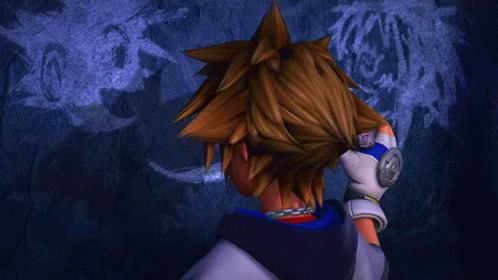


Kingdom Hearts changed me (Storytime)
While I was drawing, I don't know… I felt like I needed to say what I felt about the Kingdom Hearts license and my art of drawing.
My beginnings, my entry into art school, my graduation diploma
I started to doodle like everyone else when I was a kid, I only started to draw seriously around the age of 8/9 because I was part of a drawing association in my hometown, I started to draw related to video games around 2006 when Zelda Twilight Princess came out on Wii, this game was a big turning point for me because it was one of the first iconic licenses with the character of Link, really I only drew him at the time x). I entered art school when I was 14 because I wanted to become an illustrator (and I still dream of making a living from my art). I didn't have a very good year in the Illustration section because there was already competition between the students who were very gifted in drawing who looked down on the students who were struggling a little too much. I was right in the middle of the people who knew how to draw but who had difficulties and I already had my manga style which was very badly seen at the time. One of my teachers told me "manga is not art". I hated this teacher (spoiler: I still hate her today). The teachers helped the students who were struggling without any more help. I had average or terrible grades because either I couldn't do it or the theme they gave me didn't inspire me. Sometimes I didn't hand in an assignment. It was not easy at all when you had to submit a ton of drawing assignments every 3 weeks outside of general classes, when you came home from school at 6pm, when you were forced to follow a realistic drawing style, when you were not taught the basics of drawing (anatomy, perspective, etc.). I changed departments to go to Computer Graphics and get my graduation diploma. After my studies, I drew from time to time when I had inspiration, whether on paper or on a graphics tablet.
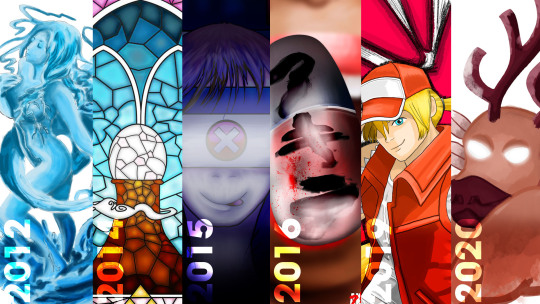
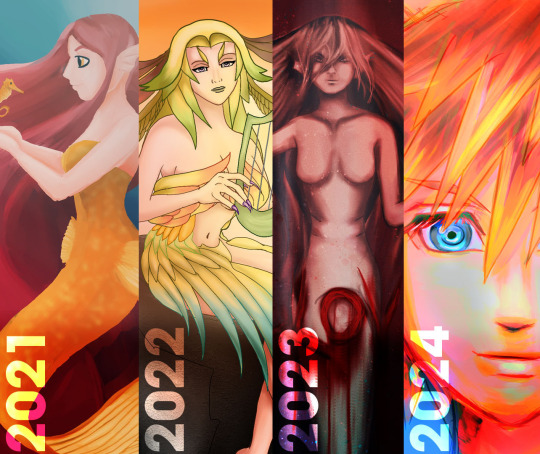
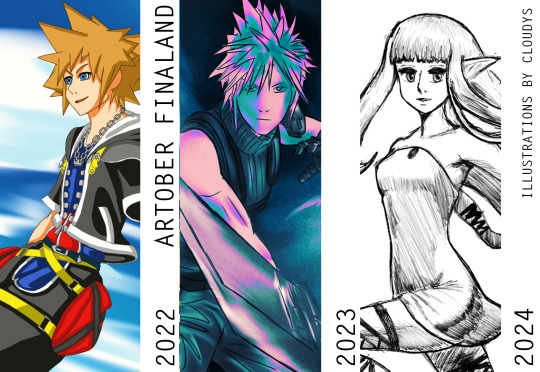
evolution of my drawing style
The discovery of Kingdom Hearts
I discovered the license via Birth by Sleep on PSP, my boyfriend had offered me the game during an outing. I very quickly stopped playing it because I found the game too hard x), I stopped towards the beginning of the game with Ventus. And I didn't touch a game of the license again until 2018 with the first compilation of games on PS3 KH 1.5, I discovered for the first time the first Kingdom Hearts game I had really advanced in the game I had even reached the last level "The End of the World", but I stopped because I had not done enough farming xD, the enemies really did a lot of damage to me, so it very quickly demotivated me and I could not finish the game. A few months later Kingdom Hearts III was released, the trailers shown at E3, etc ... really made me want to because I LOVE Disney, it was the only argument for me to buy the game. x) So I bought the game and I finished it ... and .... even if I had not understood anything about the story, I had liked the game for its Disney universes and for its gameplay. In 2022 I rediscovered all the KH games in compilations on my PC, an acquaintance did regular lives on the KH games after the Kingdom Hearts IV trailer. It made me want to do some too. So I bought KH 1.5 + 2.5 on the epic game store and off I went to do my own marathon. And what a discovery OH MY GOD ! It was just incredible ! It was on this occasion that I finally finished the first Kingdom Hearts, that I discovered Chain of Memories that I didn't finish because I HATE THE GAMEPLAY OF THIS GAME but that I redid this year in 2024, I gave the game a second chance and even if I admit that I'm still not a fan of the gameplay I understood the game better and well now I like this game ! The total discovery of Kingdom Hearts II which was a crazy adventure ! I continued with the theater mode of 358/2 days & Re:coded and replayed and finished all the stories of Birth By Sleep. I then bought KH 2.8 Final Chapter Prologue & Melody Of Memory with once again the total discovery of the games. Overall very good games, and that's how I really started to like the Kingdom Hearts license, and which became my favorite license, despite the criticism because many people find its story complicated to understand. In the meantime I discovered the cinematics of the mobile games Kingdom Hearts Back Cover | Chi | Union Cross | Dark Road and I recently played KH Re:coded & KH 358/2 days on emulator, And in truth it was really cool to have played these games.
A new icon : Sora
When I discovered Kingdom Hearts II, I was totally blown away by Sora's character design, this version of Sora started to inspire me to start drawing again. In 2022 it was the 20th anniversary of the series, after moving to a new region, I was motivated to make a drawing for the 20th anniversary of the European release of Kingdom Hearts (November 15th). I started by making my drawings in July to finish it in November before the deadline. I made 3 illustrations of Sora from KH, KHII & KHIII, it was not perfect but it was a good start to get back into drawing. From January 2023 I started to have a regular rhythm to draw, over the months I started to see a big improvement in my drawings (especially this year in 2024). The character of Sora also made me get back into cosplay after a one-year break in this environment! This character inspires me so much! he has become so important to me. In addition to being endearing, he is always there to put a smile on people's faces, to be in a good mood, to always think of others and to know how to show his true strength when necessary. In short, not a day goes by without an idea coming to my mind around the Kingdom Hearts license.
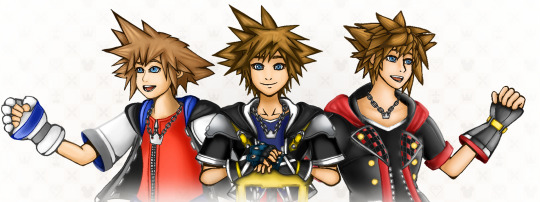
drawing made in for the 20th anniversary of KH (2022)

one of my drawings made in october 2024)
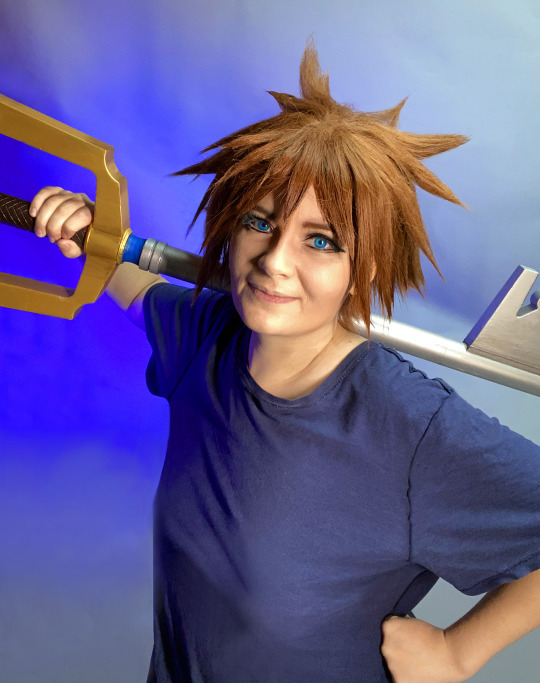
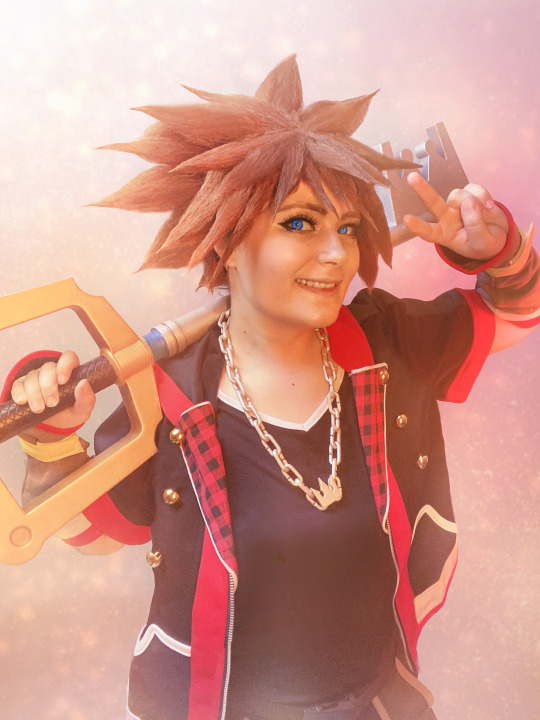
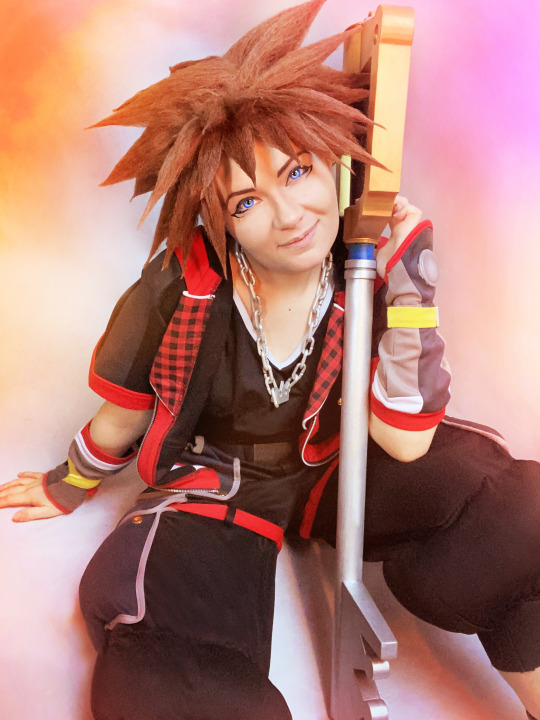
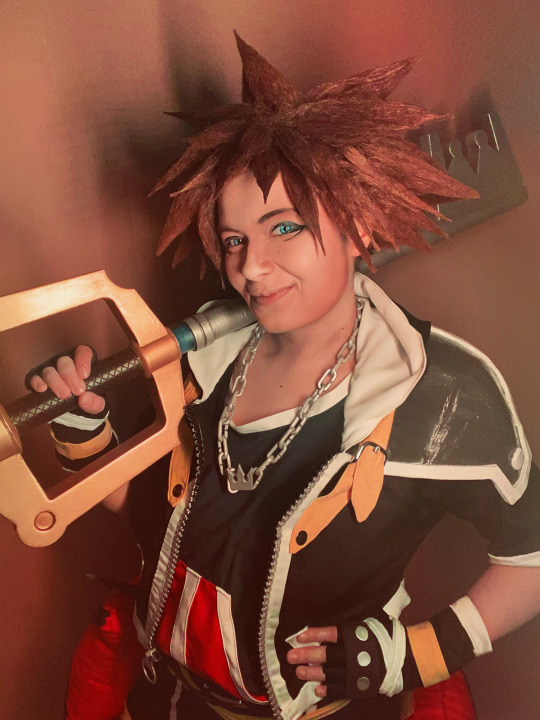
My evolution in cosplay in the character of Sora (November 2022 - June 2023 - January 2024 - September 2024)
Thank you for coming into my life Kingdom Hearts, you have become such an important license for me, a license that offers me so much inspiration in my creations ! 💖

19 notes
·
View notes
Text
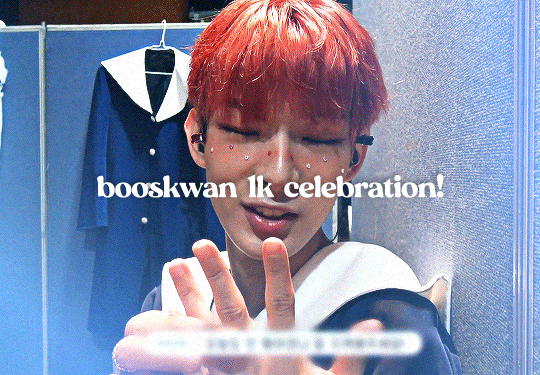
i finally hit 1k!!! (no thanks to tumblr glitching my follower count) i'm really glad so many people like the little images i make☺️ to say thank you i prepared a little something! i've put together all the overlays i have downloaded that i use in my gfx as well as the fonts i've collected over the past couple years (and an updated giffing "tutorial"!) love u all hope november is kind to you<33
for starters here is the mega folder with all of my fonts and pngs! below is my semi-updated giffing process along with some of my actions<3
my process is pretty much the same as my old tutorial but now i've changed how i export gifs! my basic process is outlined in the gif below and and i've added 3 of my actions i use almost every time i gif in this google drive! (explanations below) :]
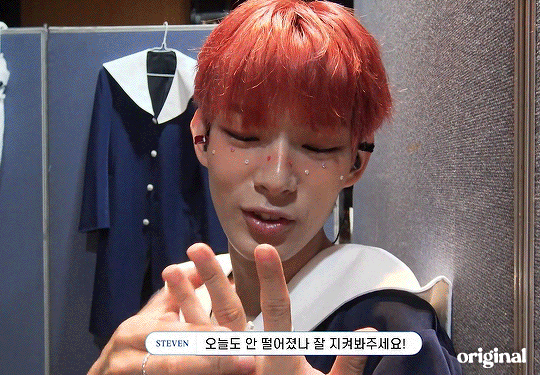
so after i know what clip i want, i put it into vapoursynth (download tutorial) and once that's saved i screencap it. what i do for screencapping is open the mov in mplayer osx extended and hold down shift+command+s but i know there's way easier ways to do it that i haven't figured out yet lol (tutorial i just found here)
once the screencaps are all on my desktop i delete any extras on either end of the clip i want and put them in a folder just so it's easier to load them in to photoshop. to do that, on the home page of photoshop go to file -> scripts -> load files into stack, then from that menu browse -> select all the screencaps you want to use for the gif and click open then ok
after they're all loaded into photoshop this is where i use my first action which just shortcuts all the way to the sharpening being done. once that's done i go to image -> mode -> 16 bits/contrast. this can help if the background is super pixely or anything like that. then i mess around with sharpening if i feel like it's too much. usually i'll change the opacity of the second sharpen layer to 50 and/or change the settings of the first sharpen layer like 200 to 150 or 0.3 to 0.2, whatever i feel like looks best. something i've also learned over the years is that sometimes you let noise do the heavy lifting and don't worry about making it look too sharp. if the gif is still a little bit unsharpened (?), the noise will make it look fine
then i do coloring which is the fun part! like i said, my process is more or less the same as my old tutorial so i'll just skip over that part and if you want more details feel free to check that one out. once i'm done with that i combine it all to a smart object, add noise (usually 1-1.5 these days), and then use my second action!
after the second action does its thing, i select all frames and set the rate. i usually set it to 0.04 for youtube videos and 0.02 or 0.03 for ts files. then, because vs leaves me with duplicate frames, i run my action for duplicates which selects all of the unwanted frames and then go to the hamburger menu just above the timeline -> delete frames. then it's ready to be saved!
#i tried to find a tutorial for how to put actions in ps but i couldn't find one sorry ㅠㅠ#pls do send me an ask or tell me in a rb if there's anything unclear or if you have any issues with anything!#*tutorials#resources#gif resources#gfx resources
19 notes
·
View notes
Text
This past July, Geoffrey Corn, a law professor at Texas Tech and a former judge advocate general in the U.S. Army, joined the Israel Defense Forces on a tour of the Rafah border. Within hours of Hamas’s attack, on October 7th, 2023, Israel began bombing Gaza. But until May, 2024, just a couple of months before Corn’s latest visit, the city of Rafah remained relatively intact. The site of the only border crossing with Egypt, Rafah was already one of the most densely populated cities in Gaza, packed further by the flight of Palestinians from the north. In February, when it became clear that the I.D.F. was planning to invade Rafah, it was estimated that 1.5 million people were living in the city.
World leaders and various organizations lobbied Israel not to go through with the incursion, including President Biden, who, on the eve of the I.D.F.’s attack, called Rafah a “red line.” The I.D.F. moved forward anyway, even as the International Court of Justice (I.C.J.) ordered Israel to “immediately halt its military offensive.” By July, when Corn surveyed the area, Rafah was largely rubble. “It looked like Berlin after World War Two,” he told me. “And, if all you do is look at that, you say, This can’t be right.”
Corn, at the height of his military career, was the U.S. Army’s senior adviser on the laws of war, also known as international humanitarian law (I.H.L.), or the law of armed conflict (LOAC). Corn brought up Berlin as a metric for the level of urban destruction he saw, but he was also, perhaps inadvertently, recalling a watershed moment in international law. The Second World War was the first armed conflict in which air power made the bombing of civilians possible at a massive scale. Military leaders pushed those possibilities to hellish extremes, following the logic that killing civilians might induce surrender. It wasn’t until the Additional Protocols of the Geneva Conventions were adopted, in 1977, that an international agreement explicitly prohibited the intentional targeting of civilians. (The United States has not ratified these protocols, but it has incorporated the basic rules of civilian protection into the Department of Defense’s Law of War Manual and treats them as customary international law.) And it wasn’t until the International Criminal Tribunal for the Former Yugoslavia, which began in 1993 and in which Corn served as a defense witness, that an international court had ever tried someone for violating this prohibition.
The war in Gaza has played out under this relatively young international legal regime.
At the Rafah border, I.D.F. intelligence officers showed Corn surveillance videos that he says demonstrated Hamas activity in the area before the I.D.F. offensive commenced. The suggestion was that the destruction he saw was not the product of an indiscriminate assault and that the laws of war had been upheld. Hamas’s use of civilian buildings transformed those sites into “military objectives,” Corn said. The civilians killed were not targets but “incidental deaths.”
The claim that Israel has adhered to the laws of war is extremely contentious. There is the genocide case at the International Court of Justice, as well as the arrest warrants the International Criminal Court issued for Prime Minister Benjamin Netanyahu and former Minister of Defense Yoav Gallant, for alleged war crimes and crimes against humanity. Numerous experts have accused Israel of flouting the laws of war, including Francesca Albanese, the U.N. special rapporteur on the Occupied Palestinian territories, who argued that Israel had weaponized international humanitarian law as “ ‘humanitarian camouflage’ to legitimize genocidal violence.” This was done “by deploying IHL concepts such as human shields, collateral damage, safe zones, evacuations and medical protection” to erode “the distinction between civilians and combatants.”
Israel has contested these claims in hearings at the I.C.J., and an array of institutions have echoed the defense. Corn’s trips to the region arose from these efforts. Besides the July visit, he also travelled there in March, 2024, with a group of retired three- and four-star generals, on a trip sponsored by the Jewish Institute for National Security of America, or JINSA. The report he subsequently co-authored with the other members of that delegation found that the I.D.F.’s implementation of civilian-risk mitigation “reflects a good-faith commitment” to comply with the laws of war, whereas Hamas acted as a pervasive and intentional violator of the law. Corn, when we spoke on the phone in late February, argued that despite the visceral nature of the destruction, which even he was struck by, the charges levelled against Israel were hasty. He was adamant that the legality of an attack cannot be judged based just on its outcomes: “That’s like me saying one plus I-don’t-know is obviously ten.” A destroyed school does not tell you whether war crimes took place. For that, he said, you need to examine the decision-making that led to the strike. “I’m not going to say that all of the damage was necessary or justified, because I don’t have enough information to say that,” Corn continued. “What I can say is that the systems and processes that the I.D.F. implemented are very similar to what we would implement in a similar battle space.”
This idea, that Israel’s conduct in Gaza is in line with the U.S. military’s understanding of its own legal obligations, has become the general consensus among American military lawyers and their allies in the academy in recent years. That is the argument at the heart of a new paper by Naz Modirzadeh, a professor at Harvard Law School and the founder of its Program on International Law and Armed Conflict. As Modirzadeh writes, in a forthcoming issue of the Harvard National Security Journal, the U.S. government has been evasive about whether Israel has violated the laws of war. Where some have seen hypocrisy and geopolitical calculation, credit for this should also be given to “a deeper transformation within the U.S. military and its legal apparatus.”
In the past several years, the Department of Defense has become fixated on how the United States might fight a major war against an enemy that rivals the American military in force and technology. In such a scenario—known as a large-scale combat operation, or L.S.C.O.—combat would take place across land, sea, air, and into the thermosphere. Command of the air could not be taken for granted. Intelligence may be spotty. Casualties could soar into the hundreds of thousands, and whole cities could be flattened. “In short,” Modirzadeh writes, the U.S. military has begun “preparing for an all-out war with China.” And, with such conflagrations burning in the mind, “LSCO lawyers,” as Modirzadeh calls them, have been arguing that the laws of war are far more permissive than many of their peers and the public seem to appreciate. From that vantage, Gaza not only looks like a dress rehearsal for the kind of combat U.S. soldiers may face. It is a test of the American public’s tolerance for the levels of death and destruction that such kinds of warfare entail.
In 2018, as Trump imposed his first tariffs on Chinese goods, the new National Defense Strategy declared that competition with China and Russia—“not terrorism”—was the principal concern for national security. With that signal, the hulking bureaucracy of the U.S. military began to reorient itself, shifting the defense budget, training manuals, weapons contracts, and military strategy to focus on the Pacific theatre. The concept of L.S.C.O. took off in these years. By one account, the term was first mentioned in official Army doctrine in 2017. By 2022, the updated Army Field Manual 3-0, Operations used the term L.S.C.O. more than a hundred times.
Modirzadeh locates the origins of L.S.C.O. lawyering within this trend. She credits a 2021 article titled “The Eighteenth Gap” that was published in The Military Review. Its authors were Lieutenant General Charles Pede, who was the Army’s highest-ranking legal expert at that time, and Colonel Peter Hayden, another military lawyer. (Both are now retired.) The title is a reference to a 2017 study from the Army’s Combined Arms Center, which laid out seventeen gaps in the force’s preparedness as it shifted its focus from counter-insurgency and counter-terrorism to a possible conflict with a technologically advanced military. To that list of seventeen, Pede and Hayden suggested adding one more, a gap in “legal maneuver space.”
The U.S. military, as the authors framed it, had practiced an exceptionally restrained form of warfare for the past twenty years. This was possible because of a specific set of circumstances—secure bases, technological superiority, command of the air and the seas—which allowed for a style of unhurried killing that reached its apex with drone strikes. From a terminal far out of harm’s way, drone pilots could hover in the sky for hours, soaking up surveillance information, building a case for precisely whom to bomb and when to do it. But, as Pede and Hayden saw it, all this restraint had conditioned both American troops and the public to believe this level of restraint was the norm. We were suffering, they wrote, from a counter-insurgency “hangover,” one that threatened the U.S. military’s preparedness for a full-scale war. In training exercises that simulated large-scale combat, soldiers were hesitant to fire certain ordnances, unsure whether they had the clearance to make that call themselves. Observing officers also noted a “general aversion to collateral damage risk.”
More confounding for Pede and Hayden was the “threat” coming from outside the armed services. Into the last decades of the twentieth century, the laws of war were almost exclusively the domain of military lawyers and humanitarians at the Red Cross. But, in the nineteen-eighties, Human Rights Watch began monitoring armed conflicts for compliance. Other N.G.O.s soon joined in, and, once the war on terror got under way, a whole knowledge industry sprang up around the laws of war. Civilian academics began studying I.H.L. alongside other bodies of international law, and journalists used the laws of war to scrutinize U.S. military actions, particularly those which led to civilian deaths. Describing this shift, Kenneth Roth, a former director of Human Rights Watch, said that militaries had “lost their monopoly over the interpretation” of the laws of war. Pede and Hayden called it “humanitarian legal creep.” For them, the U.S. military’s critics were “well-intentioned” but callow, with no authority to determine what counted as a military target and the means by which soldiers could destroy such targets.
Pede and Hayden, throughout their article, insisted that they were not disputing the importance of the laws of war. The problem, they argued, was that the laws’ comparatively minimal obligations had been conflated with the far more restrictive set of precautionary measures the U.S. military has followed as a matter of policy. That policy was discretionary, and it would be impossible to sustain in an L.S.C.O. situation; it could even be fatal. For the military lawyers, the crucial point was for American soldiers to understand that the law didn’t require them to try. “If we are to win on Battlefield Next, we must be ready to fight with the law that is, not the law as some would wish it to be,” they wrote.
After the publication of “The Eighteenth Gap,” a flurry of other articles, speeches, blog posts, and conferences followed, rehashing its argument—that the U.S. military would need to operate under a less restrictive set of rules in an L.S.C.O., and that the laws of war were sufficiently permissive to allow for that.
As military leaders and legal experts zeroed in on the details, a loose program took shape. Generally, L.S.C.O. lawyers called for delegating more authority to commanders in the field to kill independently. In the fast-moving combat expected in an L.S.C.O., soldiers would have to decide for themselves, without legal counsel and without clearance from up the chain of command, what they could target, what weapons they could use, and whether expected civilian casualties were acceptable. This would mark a departure from recent U.S. military practice, where members of the JAG corps have often worked side by side with commanders to make targeting decisions, and where strikes expected to harm civilians have typically undergone a review. L.S.C.O. lawyers also argued that targeting decisions made by commanders should be evaluated only by the subjective test of “good faith.” Imposing a higher standard could put soldiers in jeopardy, because they would be afraid that they might need to produce evidence to justify firing their weapons.
In all of these arguments, the prospect of a full-scale war functions as a pressure test. The laws of war are premised on the possibility of a compromise. They are supposed to strike a balance between humanitarian concern and military necessity. That is an immensely fraught proposition, but its contradictions fade away when you envision yourself surrounded by a blur of steel, ocean spray, and explosions. If a war between the United States and China were to erupt in the Taiwan Strait, the necessity of winning would be almost absolute. From that vantage, L.S.C.O. lawyering can be seen as an effort to preserve legal compliance and humanitarian considerations even under the most extreme conditions.
The practice of writing about the laws of war in L.S.C.O. might be seen as a form of escapism. More than two decades after its invasion of Afghanistan, the United States is still engaged in a number of armed conflicts, all of them asymmetrical. In these, the enemy is not a standing army but various terrorist organizations and looser categories of hostiles, enmeshed in large civilian populations. To focus one’s attention on the bare minimum that the laws of war require in extremis is a way to avoid the vexed moral and political problems of the past wars, which America is very much still fighting.
When the campaign in Gaza began, I.D.F. leadership issued a broad directive that vastly expanded its target list, loosened restraints on civilian casualties, and conferred greater authority on mid-rank commanders to strike targets independently—roughly the L.S.C.O. legal playbook.
A recent video, taken in April, demonstrates how permissive the I.D.F.’s rules of engagement became. In the clip, a battalion commander for the I.D.F. instructs a group of soldiers who are preparing for a hostage-rescue operation in Rafah. “Everyone you encounter is an enemy,” the commander tells his troops. “If you see anyone, open fire, neutralize the threat, and keep moving.” Less than two weeks earlier, soldiers from the same brigade, operating under a reserve commander, killed fifteen Palestinian aid workers and buried their bodies in a mass grave.
An I.D.F. spokesperson initially claimed the vehicles the workers drove were “advancing suspiciously” without headlights. I.D.F. sources told Haaretz that the soldiers had felt their lives were in danger. A video later discovered on one of the aid workers’ cellphones revealed the I.D.F.’s account to be a fabrication. In the video, a convoy of clearly marked ambulances and a fire truck move along a dirt road. They pulled over to inspect a vehicle that had veered off the road into a field. As an internal I.D.F. investigation revealed, this was another ambulance that a battalion of Israeli soldiers hiding about one hundred feet away had fired upon a few hours earlier. In the cellphone video, you can see several of the newly arrived aid workers get out of their vehicles, with the emergency lights flashing. Then gunfire erupts. The video goes black, but the camera continues to record. The gunfire lasts for several more minutes. Soldiers can be heard nearby shouting orders in Hebrew. At the same time, you can also hear the voices of aid workers who were still alive. A little over ten minutes after the cellphone video cut off, yet another vehicle arrived on scene, this one from the U.N. For a third time, the I.D.F. battalion opened fire, killing the driver.
The footage suggests these killings were a war crime. No L.S.C.O. lawyer would argue they are acceptable. But the deference that I.D.F. leaders have shown for the soldiers’ account of the killings is in line with the “good faith” standard L.S.C.O. lawyers advocate. The I.D.F. said in a statement that the incident was the result of “several professional failures” and dismissed the battalion deputy commander for giving inaccurate information. He was blamed for going off mission, and putting his unit and others in the field at risk. But, the I.D.F. has tacitly accepted his claim that he believed his soldiers were shooting at Hamas. They maintain that his battalion “did not fire indiscriminately.” In other words, they committed three mistakes in a row—not a war crime.
In reading through various accounts of the conflict written by American L.S.C.O. lawyers, it is striking how little is made of the incongruity between Israel’s tactics and military necessity—particularly given the asymmetrical nature of the conflict between Israel and Hamas, in which the former has a vast advantage in technology and firepower. Last year, former Lieutenant General David Deptula, after having been led on a tour of Rafah by the I.D.F., wrote that, from his observations, Israel was “using the right force, at the right place, at the right time.” The JINSA report that Corn co-authored provided a more nuanced, albeit legally idiosyncratic, analysis. While a large section of the report is spent emphasizing the I.D.F.’s efforts and ability to mitigate civilian harm, the authors concluded that Israel is under little legal obligation to do so. This is not because of the military threat that Hamas poses, but because of Hamas’s “motivation and intent.”
The most telling detail in reports like these, though, is the tendency to frame Israel’s main problem as a public-relations issue. “We believe the I.D.F. has fulfilled its legal obligations to provide humanitarian access and assistance to Gazan civilians,” the JINSA report reads. “At the same time, we acknowledge the strategic legitimacy of Israel’s campaign has been compromised by the perception of indifference to the humanitarian suffering in Gaza.” A current member of the JAG corps, Major Joseph Levin, put a finer point on it. “The lesson for America in the Israeli-Hamas conflict is that a democratic nation with power overmatch that is achieving consistent tactical victories still risks strategic defeat when its enemy effectively uses cognitive warfare to undermine public support,” he wrote in Military Review.
A couple of months ago, Secretary of Defense Pete Hegseth fired the judge advocate generals of the Army, Navy, and Air Force—ridding each branch of its highest-ranking legal officer. One of these was Lieutenant General Joseph Berger, who had recently published an article commending “The Eighteenth Gap” and endorsing many of the reforms L.S.C.O. lawyers have championed. On Fox News, Hegseth described Berger and the other judge advocate generals as willful “roadblocks.” For Hegseth, who has been a vocal proponent of a “warrior ethos” and has referred to military lawyers as “jagoffs,” it seems that Berger’s embrace of L.S.C.O. lawyering hadn’t gone far enough.
I spoke to Geoffrey Corn shortly after these firings. He worried that Hegseth was fashioning a military culture in which war crimes might go unpunished. “If leaders of the United States think that they can wage war with indifference toward the rules of I.H.L. or LOAC or whatever we want to call it, they’re going to learn very quickly how easy it is to win a battle and lose a war,” he said.
Corn mentioned he had never shot anyone while he served, but knew other soldiers who had. He’d asked them, Were they O.K.? “When you have to do something as part of your duty that is incredibly unpleasant, knowing that you followed a widely understood and respected rule set helps you live with the consequence of those actions.”
12 notes
·
View notes
Text
(no shade to any artist or movie mentioned, I truly love them all)
What's particularly interesting this year at the Grammy's, besides women taking over the nominations and the quality of the songs and albums nominated, is the general reaction online to AOTY. It seems like people are forgetting that the Grammy's are not supposed to give awards based on current popularity. Saying "THIS or THAT artist was listened to by 1.5 billion people on Spotify and had their song used the most on Tik Tok, NOT HER so BEYONCE DOES NOT DESERVE AOTY" is as ridiculous as saying "BARBIE had a bigger opening weekend than any other movies nominated for Best Movie of the Year SO IT SHOULD HAVE WON". Was Barbie a good movie ? Yes. Was it culturally important ? Also yes. Did it spark interesting debates surrounding capitalism and feminism colliding ? Hell yeah. But was it a better movie than the other movies nominated ? Not necessarily.
Also, people who stan artists who have won NINE or FOURTEEN Grammy's over their 15 years career span, spitting on Beyoncé and pretending that they have never heard a single song she has made over the nearly THIRTY years of her career ? Be for fucking real. (I'm a Swiftie and I love Billie Eilish's album don't come at me)
But if you wanna talk about Popularity and Musical Impact, let's do that :
I am...Sasha Fierce had ONE OF THE MOST FAMOUS SONGS WORLDWIDE (everyone knows the Single Ladies chorus and hand movement)
Her Self-Titled album, a visual album you had to buy as a whole, changed the game when she dropped it out of the blue on a Friday instead of promoting the hell out of it single by single
LEMONADE was THE most artistic, cohesive (VISUAL once again) album of the year (Adele was the only other person who could have won so I'll let it slide), featuring duets with accomplished artists (Kendrick Lamar, Jack White, The Weeknd and James Blake), songs exploring different genres and a political message sent through several songs among which had a music video with the mothers of some of the victims of police brutality (cause of course her being systematically snubbed for AOTY has NOTHING to do with racism.......... They could have given it to Sabrina Carpenter this year given their love for any white artist)
Renaissance was extremely crafted and, despite the legit debate it sparked when she went to Dubai during its promotion, an homage to the Ballroom culture. Plus, CUFF IT was ALL OVER TIK TOK (since that's all that matters)
Cowboy Carter was a response to the racism she faced when she performed with the Dixie Chicks (you know just the band blacklisted after they criticized Bush and his invasion of Iraq, no big deal) and a way to reclaim the country genre as a Black woman, and featured a few legends of country including THE Dolly Parton, AND featured one of the best songs of her career (Daughter) in which she sings OPERA but it wasn’t a single so I guess those who haven’t taken the time to listen to her album have no idea it exists
So yeah, she's not culturally insignificant, she's just not your type of music (which is totally okay but we're all adults here so let's stop acting as if "I don't like it" = "It's not good"). Just like you can dislike Leonardo Dicaprio's movies but can't deny he's a fucking good actor.
Even HARRY STYLES won AOTY like BE FUCKING SERIOUS FOR A SECOND NOW. (Love him but did this album deserve AOTY even though it was good ?)
Now, am I mad that she won for one of her least infallible albums just a year after her husband had to whine on stage about her never winning, even more given that said husband is involved in an absolutely terrifying case (and yeah, she might be as well but as long as she's not explicitely mentioned in legal documents, we can only assume) ? HELL YES. (After all, they might have given it to her now so she can be cancelled later, who knows)
#can't believe THIS is my first post#ramblings#beyonce#barbie#grammys#harry styles#jay z#sabrina carpenter#billie eilish#taylor swift#music#thoughts#tik tok#spotify#album of the year#aoty#leonardo dicaprio#chapell roan#chapell should have gotten an award for good luck babe though that’s for sure
12 notes
·
View notes
Text
Music theory notes (for science bitches) - part 2: pentatonics and friends
or, the West ain't all that.
Hello again everyone! I'm grateful for the warm reception to the first music theory notes post (aka 'what is music? from first principles'). If you haven't read it, take a look~
In that stab at a first step towards 'what is music', I tried to distinguish between what's a relatively universal mathematical structure (nearly all musical systems have the octave) and what's an arbitrary convention. But in the end I did consciously limit myself, and make a beeline for the widely used 12TET tuning system and the diatonic scales used in Western music. I wanted to avoid overwhelming myself, and... 👻 it's all around us...👻
But! But but but. This is a series on music theory. Not just one music theory. The whole damn thing. I think I'm doing a huge disservice to everyone, not least me, if that's where we stop.
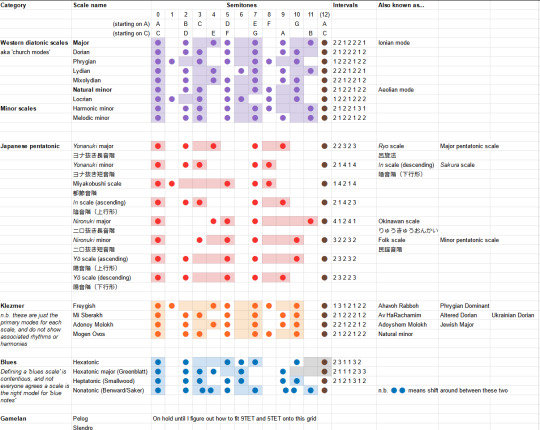
Today, then! For our second installation: 'Music theory notes (for science bitches)' will take a quick look through some examples that diverge from the diatonic scale: the erhu, Japanese pentatonic scales, gamelan, klezmer, and blues.
Also since the first part was quite abstract, we'll also having a go at using the tools we've built so far on a specific piece, the Edo-period folk song Sakura, Sakura.
Sound fun? Let's fucking gooooo
The story so far
To recap: in the first post we started by saying we're gonna be looking at tonal music, which isn't the only type of music. We introduced the idea of notes and frequencies by invoking the magic name of Fourier.
We said music can be approximated (for now) as an idealised pressure wave, which we can divide into brief windows called 'notes', and these notes are usually made of a strong sine wave at the 'fundamental frequency', plus a stack of further sine waves at integer multiples of that frequency called 'overtones'.
Then, we started constructing a culturally specific but extremely widespread system of creating structure between notes, known as '12 Tone Equal Temperament' or 12TET. The main character of this story is the interval, which is the ratio between the fundamental frequencies of two notes; we talked about how small-integer ratios of frequencies tend to be especially 'consonant' or nice-sounding.
We introduced the idea of the 'octave', which is when two notes have a frequency ratio of 2. We established the convention treating notes an octave apart as deeply related, to the point that we give them the same name. We also brought in the 'fifth', the ratio of 1.5, and talked about the idea of constructing a scale using small-integer ratios.
But we argued that if you try and build everything with those small-integer ratios you can dig yourself into a hole where moving around the musical space is rife with complications.
As a solution to this, I pulled out 'equal temperament' as an approximation with a lot of mathematical simplicity. Using a special irrational ratio called the "semitone" as a building block, we could construct the Western system of scales and modes and chords and such, where
a 'scale' is kind of like a palette for a piece of music, defined by a set of frequency ratios relative to a 'root' or 'tonic' note. this can be abstract, as in 'the major scale', or concrete, as in 'C major'.
a 'mode' is a cyclic permutation of an abstract scale. although it may contain the same notes, moving them around can change the feeling a lot!
a 'chord' is playing multiple notes at the same time. 'Triad' chords can be constructed from scales. There are other types which add or remove stuff from the triads. We'll come back to this.
I also summarised how sheet music works and the rather arbitrary choices in its construction, and at the end, I very briefly talked about chord notation.
There's a lot of ways to do this...
I recently watched a video by jazz musician and music theory youtuber Adam Neely, in which he and Philip Ewell discuss how much "music theory" is treated as synonymous with a very specific music theory which Neely glosses as "the harmonic style of 18th-century European composers". He argues, pretty convincingly imo, that 'music theory' pedagogy is seriously weakened by not taking non-white/Western models, such as Indian classical music theories, as a foil - citing Anuja Kamat's channel on Indian classical music as a great example of how to do things differently. Here's her introductory playlist on Indian classical music concepts, which I will hopefully be able to lean on in future posts:
There's two big pitfalls I wanna avoid as I teach myself music theory. I like maths a lot, and if I can fit something into a mathematical structure it's much easier for me to remember it - but I gotta be really careful not to mathwash some very arbitrary conventions and present them as more universal than they are. Music involves a lot of mathematics, but you can't reduce it to maths. It's a language for expressing emotion, not a predicate to prove.
One of the big goals of this series is to get straight in my head what has a good answer to 'why this way?', and what is just 'idk it's the convention we use'. And if something is an arbitrary convention, we gotta ask, what other conventions exist? Humans are inventive little buggers after all.
I also don't want to limit my analytical toolbox to a single 'hammer' of Western music theory, and try and force everything else into that frame. The reasons I'm learning music theory are... 1. to make my playing and singing better, and be more comfortable improvising; 2. to learn to compose stuff, which is currently a great mystery. How do they do it? I do like Western classical music, but honestly? Most of the music I enjoy is actually not Western. I want to be able to approach that music on its own terms.
For example, the erhu... for erhuample???
The instrument family I'm learning, erhu/zhonghu, is remarkably versatile - there are no frets (or even a soundboard!) to guide you, which is both a challenge and a huge freedom. You can absolutely play 12TET music on it, and it has a very beautiful sound - here is an erhu harmonising with a 12TET-tuned piano to play a song from the Princess Mononoke soundtrack, originally composed by Joe Hisaishi as an orchestral piece for the usual Western instruments...
youtube
This performance already makes heavy use of a technique called (in English) 'vibrato', where you oscillate the pitch around as you play the note (which means the whole construction that 'a note has a fixed pitch defined by a ratio' is actually an abstraction - now a note's 'frequency' represents the middle point a small range of pitches!). Vibrato is very common in Western music too, though the way you do it on an erhu and the way you do it on a violin or flute are of course a little different. (We could do an aside on Fourier analysis of vibrato here but I think that's another day's subject).
But if you listen to Chinese compositions specifically for Erhu, they take advantage of the lack of fixed pitch to zip up and down like crazy. Take the popular song Horse Racing for example, composed in the 1960s, which seems to be the closest thing to the 'iconic' erhu piece...
youtube
This can be notated in 12TET sheet music. But it's also taking full advantage of some of the unique qualities of the erhu's long string and lack of frets, like its ability to glide up and down notes, playing the full range of 'in between' frequencies on one string. The sheet music I linked there also has a notation style called 简谱 jiǎnpǔ which assigns numbers to notes. It's not so very different from Western sheet music, since it's still based on the diatonic major scale, but it's adjusted relative to the scale you're currently playing instead of always using C major. Erhu music very often includes very fast trills and a really skilled erhu/zhonghu player can jump between octaves with a level of confidence I find hard to comprehend.
I could spend this whole post putting erhu videos but let me just put one of the zhonghu specifically, which is a slightly deeper instrument; in Western terms the zhonghu (tuned to G and D) is the viola to the erhu's violin (tuned to D and A)...
youtube
To a certain degree, Chinese music is relatively easy to map across to the Western 12-tone chromatic scale. For example, the 十二律 shí'èr lǜ system uses essentially the same frequency ratios as the Pythagorean system. However, Chinese music generally makes much heavier use of pentatonic scales than Western music, and does not by default use equal temperament, instead using its own system of rational frequency ratios. correction: with the advent of Chinese orchestras in the mid-20thC, it seems that Chinese instruments now usually are tuned in equal temperament.
I would like my understanding of music theory to have a 'first class' understanding of Chinese compositions like Horse Racing (and also to have a larger reference pool lmao). I'm going to be starting formal erhu lessons next month, with a curriculum mostly focused on Chinese music. If I have interesting things to report back I'll be sure to share them!
Anyway, in a similar spirit, this post we're gonna try and do a brief survey of various musical constructs relevant to e.g. Japanese music, Klezmer, Blues, Indian classical music... I have to emphasise I am not an expert in any of these systems, so I can't promise to have the most elegant form of presentation for them, just the handles I've been able to get. I will be using Western music theory terms quite a bit still, to try and draw out the parallels and connections. But I hope it's going to be interesting all the same.
Let's start with... pentatonic scales!
Pentatonic scales
In the previous post we focused most of our attention on the diatonic scale. Confusingly, a "diatonic" scale is actually a type of heptatonic scale, meaning there are 7 notes inside an octave. As we've seen, the diatonic scale is constructed on top of the 12-semitone system.
Strictly defined, a 'diatonic' scale has five intervals of two semitones and two intervals of one semitone, and the one-semitone intervals are spread out as much as possible. So 'diatonic scales' includes the major scale and all its cyclic permutations (aka 'modes'), including the natural minor scale, but not the other two minor scales we talked about last time!
However, whoever said we should pick exactly 7 notes in the octave? That's rather arbitrary, isn't it?
After all, in illustration, a more restricted palette can often lead to a much more visually striking image. The same is perhaps even more true in music!
A pentatonic scale is, as the name suggests, a scale which has five notes in an octave. Due to all that stuff we discussed with small-number ratios, the pentatonic scales we are about to discuss can generally be mapped quite easily onto the 12-tone system. There's some reason for this - 12TET is designed to closely approximate the appealing small-number frequency ratios, so if another system uses the same frequency ratios, we can probably find a subset of 12TET that's a good match.
Of course, fitting 12TET doesn't mean it matches the diatonic scale, necessarily. Still, once you're on the 12 tone system, there's enough diatonic scales out there that you can often define a pentatonic scale in terms of a delta relative to one of the diatonic scale modes. Like, 'shift this degree down, delete that degree'.
Final caveat: I'm not sure if it's strictly correct to use equal temperament in all these examples, but all the sources I find define these scales using Western music notation, so we'll have to go with that.
Sakura, sakura and the yonanuki scale
Let's start with Japanese music. Here's the Edo-period folk song Sakura, Sakura, which is one of the most iconic pieces of Japanese music¸ especially abroad:
youtube
This uses the in scale, also known as the sakura pentatonic scale, one of a few widely used pentatonic scales in Japanese folk music, along with the yo scale, insen scale and iwato scale... according to English-language sources.
Finding the actual Japanese was a bit difficult - so far as I can tell the Japanese wiki page for Sakura, Sakura never mentions the scale named after it! - but eventually I found a page for pentatonic scales, or 五音音階 goon onkai. So we can finally determine the kanji for this scale is 陰音階 in onkai or 陰旋法 in senpou. [Amusingly, the JP wiki article on pentatonic scales actually leads with... Scottish folk songs and gamelan before it goes into Japanese music.]
However, perhaps more pertinent is this page: ヨナ抜き音階 which introduces the terms yonanuki onkai and ニロ抜き音階 nironuki onkai. This can be glossed as 'leave out the fourth (yo) and seventh (na) scale' and 'leave out the second (ni) and sixth (ro) scale', describing two procedures to construct pentatonic scales from a diatonic scale.
Let's recap major and minor. Last time we defined them using semitone intervals from a root note (the one in brackets is the next octave):
position: 1, 2, 3, 4, 5, 6, 7, (8) major: 0, 2, 4, 5, 7, 9, 11, (12) minor: 0, 2, 3, 5, 7, 8, 10, (12)
From here we can construct some pentatonic scales. Firstly, here are your yonanuki scales - the ones that delete the fourth and seventh:
major: 0, 2, 4, 7, 9, (12) minor: 0, 2, 3, 7, 8, (12)
Starting on C for the major and A for the minor (the ones with the blank key signature), this is how you notate that in Western sheet music. As you can see, we have just deleted a couple of steps.


The first one is the 'standard' major pentatonic scale in Western music theory; it's also called the ryo scale in traditional Japanese music (呂旋法 ryosenpou). The second one is a mode (cyclic permutation) of a scale called 都節音階 miyakobushi, which is apparently equivalent to the in scale.
In terms of gaps between successive notes, these go:
major: 2, 2, 3, 2, 3 - very even minor: 2, 1, 4, 1, 4 - whoah, huge intervals!
The miyakobushi scale, for comparison, goes...
miyakobushi (absolute): 0, 1, 5, 7, 8, (12) miyakobushi (deltas): 1, 4, 2, 1, 4
JP wikipedia lists two different versions of the 陰旋法 (in scale), for ascending and descending. Starting on C, one goes C, D, Eb, G, A; the other goes C, D, Eb, G, Ab. Let's convert that into my preferred semitone interval notation:
in scale (absolute, asc): 0, 2, 3, 7, 9, (12) in scale (relative, asc): 2, 1, 4, 2, 3 in scale (absolute, desc): 0, 2, 3, 7, 8, (12) in scale (relative, desc): 2, 1, 4, 1, 4
So we see that the 'descending form' of the in scale matches the minor yonanuki scale, and it's a mode (cyclic permutation) of the miyakobushi scale.
We've talked a great deal about the names and construction of the different type of scales, but beyond the vague gesture to the standard associations of 'major upbeat, minor sad/mysterious' I don't think we've really looked at how a scale actually affects a piece of music.
So let's have a look at the semitone intervals in Sakura, Sakura in absolute terms from to the first note...
sakura, sakura, ya yoi no so ra-a wa 0, 0, 2; 0, 0, 2; 0, 2, 3, 2, 0, 2-0, -4
and in relative terms between successive notes:
sa ku ra, sa ku ra, ya yo i no so ra-a wa 0, 0, +2; -2, 0, +2; -2, +2, +1, -1, -2, +2, -2, -4
If you listen to Sakura, Sakura, pay attention to the end of the first line - that wa suddenly drops down a huge distance (a major second - for some reason I miscalculated this and thought it was a tritone) and that's where it feels like damn, OK, this song is really cooking! It catches you by surprise. We can identify these intervals as belonging to the in/yoyanuki minor scale, and even starting on its root note.
Although its subject matter is actually pretty positive (hey, check it out guys, the cherry blossoms are falling!), Sakura, Sakura sounds mournful and mysterious. What makes it sound 'minor'? The first phrase doesn't actually tell you what key we're in, that jump of 2 semitones could happen in major or minor. But the second phrase, introduces the pattern of going up 2, then up 1, from the root note - that's the minor scale pattern. What takes it beyond just 'we're in minor'? That surprise tritone move down. According to the rough working model that 'dissonant notes create tension, consonant notes resolve it', this creates a ton of tension. This analysis is bunk, there isn't a tritone. It's a big jump but it's not that big a jump.
How does it eventually wrap up? The final phrase of Sakura, Sakura goes...
i za ya, i za ya, mi ni yu - u ka nn 0, 0, 2; 0, 0, 2; -5, -4, 2, 0, -4, -5 0, 0, +2; -2, 0, +2; -5, +1, +4, -2, -4, -1
Here's my attempt to try and do a very basic tonal/interval analysis. We start out this phrase with the same notes as the opening bars, but abruptly diverge in bar 3, slowing down at the same time, which provides a hint that things are about to come to a close. The move of -5 down is a perfect fourth; in contrast to the tritone major second we had before, this is considered a very consonant interval. (A perfect fourth down is also equivalent to going up a fifth and then down an octave. So we're 'ending on the fifth'.) We move up a little and down insteps of 4, 2, and 1, which are less dramatic. Then we come back down and end on the fifth. We still have those 4-steps next to 1 steps which is the big flag that says 'whoah we're in the sakura pentatonic scale', but we're bleeding off some of the tension here.
Linguistically, the song also ends on the mora ん, the only mora that is only a consonant (rather than a vowel or consonant-vowel), and that long drawn-out voiced consonant gives a feeling of gradually trailing away. So you could call it a very 'soft' ending.
Is this 'tension + resolution' model how a Japanese music theorist would analyse this song? It seems to be a reasonably effective model when applied to Japanese music by... various music theorist youtubers, but I don't really know! That's something I want to find out more about.
Something raised on the English wiki is the idea that the miyakobushi scale is divided into two groups, spanning a fourth each, which is apparently summarised by someone called Koizumi Fumio in a book written in 1974:

Each group goes up 1 (a semitone or minor second), then 4 (major third), for a total of 5 (perfect fourth). The edges of these little blocks are considered 'nucleus' notes, and they're of special importance.
Can we see this in action if we look at Sakura, Sakura? ...ehhhh. I admit, the way I think of the song is shaped by the way I play it on the zhonghu; I think of the first two two-bar phrases as the 'upper part' and the third phrase as the 'lower part', and neither lines up neatly with these little groups. Still. I suspect Koizumi Fumio, author of Nihon no ongaku, knows a little more about this than I do, so I figure it's worth a mention.
Aside: on absorbing a song
Sakura, Sakura is kinda special to me because it's like the second piece I learned to play on zhonghu (after Twinkle, Twinkle Little Star lmao). I can't play it well, but I am proud that I have learned to play it at least recognisably.
The process of learning to play it involved writing out tabs and trying out different ways of moving my hand. I transcribed Sakura Sakura down to start on F, since that way the open G string of the zhonghu could be the lowest note of the piece, and worked out a tab for it using a tab system I cooked up with my friend. Here's what it looks like. The system counts semitones up from the open string, and it uses an underline to mark the lower string.
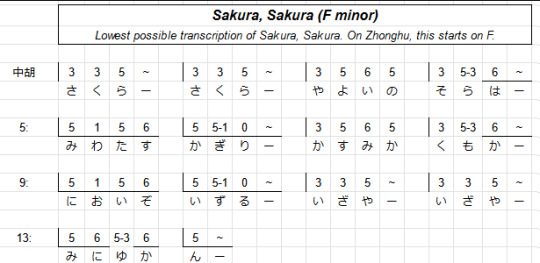
(Also, credit where it's due - I would never have made any progress learning about music if not for my friend Maki Yamazaki, a prodigiously multitalented self-taught musician who can play dozens of instruments, and also the person who sold me her old zhonghu for dirt cheap, if you're wondering why a white British girl might be learning such an unusual instrument. You can and should check our her music here! Maki has done more than absolutely anyone to make music comprehensible to me, and a lot of this post is inspired by discussing the previous post with her.)
When you want to make a song playable on an instrument, you have to perform some interpretation. Which fingers should play which notes? When should you move your hand? How do you make sure you hit the right notes? At some point this kind of movement becomes second nature, but I'm at the stage, just like a player encountering a new genre of videogame, where I still don't have the muscle memory or habituation to how things work, and each of these little details has to be worked out one by one. But this is great, because this process makes me way more intimately familiar with the contours of the song. Trying to analyse the moves it makes like the above even more so.
More Japanese scales
So, to sum up what we've observed, the beautiful minor sounds of Sakura Sakura come from a pentatonic scale which can be constructed by taking the diatonic scale and blasting certain notes into the sea, namely the fourth and the seventh of the scale. But what about the nironuki scale? Well, this time we delete the second and the sixth. So we get, in absolute terms:
major nironuki (abs): 0, 4, 5, 7, 11, (12) major nironuki (rel): 4, 1, 2, 4, 1 minor nironuki (abs): 0, 3, 5, 7, 10, (12) minor nironuki (rel): 3, 2, 2, 3, 2
Hold on a minute, doesn't that look rather familiar? The major nironuki scale is a permutation, though not a cyclic permutation, of the minor yonanuki scale. And the minor nironuki scale is a cyclic permutation (mode) of the major one.
Nevertheless, these scales have names and significance of their own. The major one is known as the 琉球音階 ryūkyū onkai or Okinawan scale. The minor one is what Western music would call a 'minor pentatonic scale'. It also mentions a couple of other names for it, like the 民謡音階 minyou onkai (folk scale).
We also have the yō scale, which like the in scale, comes in ascending and descending forms. You want these too? Yeah? Ok, here we go.
yō scale (asc, abs): 0, 2, 5, 7, 10, (12) yō scale (asc, rel): 2, 3, 2, 3, 2 yō scale (desc, abs): 0, 2, 5, 7, 9, (12) yō scale (desc, rel): 2, 3, 2, 2, 3
The yō scale is what's called an anhemitonic pentatonic scale, which is just a fancy way of saying it doesn't have semitones. (The in scale in turn is hemitonic). The ascending form is also called the 律戦法 ritsusenpou. Here's the complete table of all the variants I've found so far.
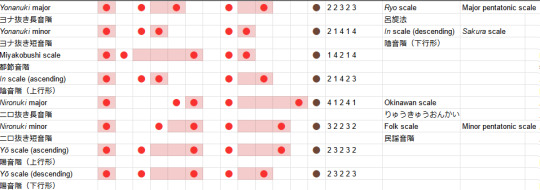
So, in summary: Japanese music uses a lot of pentatonic scales. (In a future post we can hopefully see how that applies in modern Japanese music). These pentatonic scales can be constructed by deleting two notes from the diatonic scales. In general, you land in one of two zones: the anhemitonic side, where all the intervals between successive notes, are 2 and 3, and the hemitonic side, where the intervals are spicier 1s and 4s and a lone 2. From there, you can move between other pentatonic scales by cyclic permutations and reversal.
If you analyse Japanese music from a Western lens, you might well end up interpreting it according to one of the modes of the major scale. In fact, the 8-bit music theory video I posted last time takes this approach. This isn't wrong per se, it's a viable way to getting insight into how the tune works if you want to ask the question 'how does this conjure emotions and how do I get the same effects', but it's worthwhile to know what analytical frame the composers are likely to be using.
Gamelan - when 12TET won't cut it
Gamelan is a form of Indonesian ensemble music. I do not at this time know a ton about it, but here's a performance:
youtube
However, if you're reading my blog then it's likely that if know gamelan from anywhere, it's most likely the soundtrack to Akira composed by Shōji Yamashiro.
youtube
This blends traditional gamelan instrumentation and voices with modern synths to create an incredibly bold and (for most viewers outside Indonesia!) unfamiliar sound to accompany the film's themes of psychic awakening and evolution. It was an inspired choice, adding a lot to an already great film.
'A gamelan' is the ensemble; 'gamelan' is also the style of music. There are many different types of gamelan associated with different occasions - some gamelans are only allowed to form for special ceremonies. Gamelan is also used as a soundtrack in accompaniment to other art forms, such as wayang kulit and wayang wong (respectively, shadow puppetry and dance).
Since gamelan music evidently uses quite a bit of percussion, and so far we've been focused on the type of music played on strings and wind instruments - a brief comment on the limitations of our abstractions. Many types of drums don't fit the 'tonal music' frame we've outlined so far, creating a broad frequency spectrum that's close to an enveloped burst of white noise rather than a sharply peaked fundamental + overtones. There's a ton to study in drumming, and if this series continues you bet I'll try to understand it.
But there are tonal percussion instruments, and a lot of them are to be found in gamelan, particularly in the metalophone family (e.g. the ugal or jegogan). The Western 'xylophone' and 'glockenspiel' also belong to this family. Besides metalophones, you've got bells, steel drums, tuning forks etc. Tuning a percussion instrument is a matter of adjusting the shape of the metal to adjust the resonant frequency of its normal modes. I imagine it's really fiddly.
In any case, the profile of a percussion note is quite different from the continual impulse provided by e.g. a violin bow. You get a big burst across all frequencies and then everything but the resonant mode dies out, leaving the ringing with a much simpler spectrum.
Anyway, let's get on to scales and shit. While I have the Japanese wikipedia page on pentatonic scales open, that it mentions a gamelan scale called pelog (written ᮕᮦᮜᮧᮌ᮪, ꦥꦺꦭꦺꦴꦒ꧀ or ᬧᬾᬮᭀᬕ᭄ in different languages) meaning 'beautiful'. Pelog is not strictly one scale, but a family of tunings which vary across Indonesia. Depending on who you ask, it might in some cases be reasonably close to a 9-tone equal temperament (9TET), which means a number of notes can't be represented in 12TET - you have that 4 12TET semitones would be equivalent to 3 9TET semitones. From this is drawn a heptatonic scale, but not one that can be mapped exactly to any 12TET heptatonic scale. Isn't that fun!
To represent scales that don't exactly fit the tuning of 12TET, there's a logarithmic unit of measure called the 'cent'. Each 12TET semitone contains 100 cents, so in terms of ratios, a cent is the the 1200th root of 2. In this system, a 9TET semitone is 133 cents. Some steps in the pelog heptatonic scale would then be two 9TET semitones, and others one 9TET semitone. However, this system of 'semitones' does not seem to be how gamelan music is actually notated - it's assumed you already have an established pelog tuning and can play within that. So it's a little difficult for me to give you a decent representation of a gamelan scale that isn't approximated by 12TET.
From the 7-tone pelog scale, whatever it happens to be where you live, you can further derive pentatonic scales. These have various names, like the pelog selisir used in the gamelan gong kebyar. I'm not going to itemise them here both because I haven't actually been able to find the basic pelog tunings (at least by their 9TET approximation).
Another scale used in gamelan is called slendro, a five tone scale of 'very roughly' equal intervals. Five is coprime with 12, so there's no straightforward mapping of any part of this scale to the 12-tone system. But more than that, fully even scales are quite rare in the places we've looked so far. (Though apparently within slendro, you can play a note that's deliberately 'out of place', called 'miring'. This transforms the mood from 'light, cheerful and busy' to one appropriate to scenes of 'homesickness, love missing, sadness, death, languishing'.)
The Western musical notation system is plainly unsuited for gamelan, and naturally it has its own system - or rather several systems. In one method, the seven tones of the pelog are numbered 1 through 7, and a subset of those numbers are used to enumerate slendro tuning. You can write it on a grid similar to a musical staff.
But we could wonder with this research - is the attempt to map pélog to 'equal temperament' an external imposition? Presented with a tuning system with seven intervals that are not consistently equal temperament, averaging them to construct an equal temperament hypothesis on that basis, and finally attempting to prove that gamelan players 'prefer' equal temperament... well, they do at least bother to ask, but I'm not entirely convinced that 9TET or 5TET is the right model. Unfortunately, most of the literature I'm able to find on gamelan music theory with a cursory search is by Western researchers.
There's a fairly long history of Western composers taking inspiration from gamelan, notably Debussy and Saty. And of course, modern Indonesian composers such as I Nyoman Windha have also been finding ways to combine gamelan with Western styles. Here's a piece composed by him (unfortunately not a splendid recording):
youtube
Klezmer - layer 'em up
If you've known me for long enough you might remember the time I had a huge Daniel Kahn and the Painted Bird phase. (I still think he's great, I just did that thing where I obsessively listen to one small set of things for a period). And I'd also listen to old revolutionary songs in Yiddish all the time. Because of course I did lmao. Anyway, here's a song that combines both: Kahn's modern arrangement of Arbetlose Marsch in English and Yiddish:
youtube
That's a style of music called klezmer, developed by Ashkenazi Jews in Central/Eastern Europe starting in the late 1500s and 1600s. It's a blend of a whole bunch of different traditions, combining elements from Jewish religious music with other neighbouring folk music traditions and European music at large. When things really kicked off at the end of the 19th century, klezmer musicians were often a part of the Jewish socialist movement (and came up with some real bangers - the Tsar may have been shot by the Bolsheviks but tbh, Daloy Politsey already killed him). But equally there's a reason it sounds insanely danceable: it was very often used for dances.
The rest of the 20th century happened, but klezmer survived all the genocides and there are lots of different modern klezmer bands.
The defining characteristics of klezmer per Wikipedia are... ok, this is quite long...
Klezmer musicians apply the overall style to available specific techniques on each melodic instrument. They incorporate and elaborate the vocal melodies of Jewish religious practice, including khazones, davenen, and paraliturgical song, extending the range of human voice into the musical expression possible on instruments.[21] Among those stylistic elements that are considered typically "Jewish" in Klezmer music are those which are shared with cantorial or Hasidic vocal ornaments, including dreydlekh ("tear in the voice"; plural of dreidel)[22][23] and imitations of sighing or laughing ("laughter through tears").[24] Various Yiddish terms were used for these vocal-like ornaments such as קרעכץ (Krekhts, "groan" or "moan"), קנײטש (kneytsh, "wrinkle" or "fold"), and קװעטש (kvetsh, "pressure" or "stress").[10] Other ornaments such as trills, grace notes, appoggiaturas, glitshn (glissandos), tshoks (a kind of bent notes of cackle-like sound), flageolets (string harmonics),[22][25]pedal notes, mordents, slides and typical Klezmer cadences are also important to the style.[18]
So evidently klezmer will be relevant throughout this series, but for now, since we're trying to flesh out the picture of 'how is tuning formed', let's take a look at the notes.
So it's absolutely possible to fit klezmer into the 12TET system. But we're going to need to crack open a few new scales. Though the Wikipedia editors enumerating this list caution us: "Another problem in listing these terms as simple eight-note (octatonic) scales is that it makes it harder to see how Klezmer melodic structures can work as five-note pentachords, how parts of different modes typically interact, and what the cultural significance of a given mode might be in a traditional Klezmer context."
With that caution in mind, let's at least see what we're given. First of all we have the Freygish or Ahavoh Rabboh scale, one of the most common pieces, good friend of the Western phrygian but with an extra semitone. Then there's Mi Sbererakh or Av HaRachamim which is a mode of it, that's popular around Ukraine. Adonoy Molokh or Adoyshem Molokh is the major scale but you drop the seventh a semitone. Mogen Ovos is the same as the natural minor at least on the interval level.
Which means, without the jargon, here are the semitones (wow wouldn't it be nice if you had tables on here?):

position: 1, 2, 3, 4, 5, 6, 7, (8) freygish: 0, 1, 4, 5, 7, 8, 10, (12) deltas: 1, 3, 1, 2, 1, 2, 2 mi sberakh: 0, 2, 3, 6, 7, 9, 10, (12) deltas: 2, 1, 3, 2, 2, 1, 2 adonoy m.: 0, 2, 4, 5, 7, 9, 10, (12) deltas: 2, 2, 1, 2, 2, 1, 2 mogen o.: 0, 2, 3, 5, 7, 8, 10, (12) deltas: 2, 1, 2, 2, 1, 2, 2
...that's a big block of numbers to make your eyes glaze over huh. Maybe this 'convert everything to semitone deltas' thing isn't all it's cracked up to be... or maybe what I need to do is actually visualise it somehow? Some kinda big old graph showing all the different scales we've worked out so far and how they relate to each other? ...hold your horses...
[It seems like what I've done is reinvent something called 'musical set theory', incidentally.]
OK, having enumerated these, let's return to the Wikipedian's caution. What is a pentachord? Pretty simple, it's a chord of five notes. Mind you, some people define it as five successive notes of a diatonic scale.
In klezmer, you've got a bunch of different instruments playing at once creating a really dense sound texture. Presumably one of the things you do when you play klezmer is try and get the different instruments in your ensemble to hit the different levels of that pentachord. How does that work? Well, if we consult the sources, we find this scan of a half-handwritten PDF presenting considerably more detail on the modes and how they're played. The scales above are combined with a 'motivic scheme' presenting different patterns that notes tend to follow, and a 'typical cadence'. Moreover, these modes can have 'sub-modes' which tend to follow when the main mode gets established.
To me reading this, I can kind of imagine the process of composing/improvisation within this system almost like a state machine. It's not just that you have a scale, you have a certain state you're in in the music (e.g. main mode or sub-mode), and a set of transitional moves you can potentially make for the next segment. That's probably too rigid a model though. There's also a more specific aspect discussed in the book that a klezmer musician needs to know how to move between their repertoire of klezmer pieces - what pieces can sensibly follow from what.
Ultimately, I don't want to give you a long list of stuff to memorise. (Sure, if you want to play klezmer, you probably need to get familiar with how to use these modes, but that's between you and your klezmer group). Rather I want to make sure we don't have any illusion that the Western church modes are the only correct way to compose music.
Blues - can anyone agree?
Blues is a style of music developed by Black musicians in the American south in the late 1800s, directly or indirectly massively influential on just about every genre to follow, but especially jazz. It's got a very characteristic style defined by among other elements use of 'blue notes' that don't fit the standard diatonic scale. According to various theorists, you can add the blue notes to a scale to construct something called the 'blues scale'. According to certain other theorists, this exercise is futile, and Blues techniques can't be reduced to a scale.
So for the last part of today's whirlwind tour of scales, let's take a brief look at the blues...
There are a few different blues scales. The most popular definition seems to be a hexatonic scale. We'll start with the minor pentatonic scale, or in Japanese, the minor nironuki scale - which is to say we take the minor diatonic scale and delete positions 2 and 6. That gives:
minor nironuki (abs): 0, 3, 5, 7, 10, (12) minor nironuki (rel): 3, 2, 2, 3, 2
Now we need to add a new note, the 'flat fifth degree' of the original scale. In other words, 6 semitones above the root - the dreaded tritone!
hexatonic blues (abs): 0, 3, 5, 6, 7, 10, (12) hexatonic blues (rel): 3, 2, 1, 1, 3, 2
Easy enough right? Listen to that, it does sound kinda blues-y. But hold your horses! Moments after defining this scale, we read...
A major feature of the blues scale is the use of blue notes—notes that are played or sung microtonally, at a slightly higher or lower pitch than standard.[5] However, since blue notes are considered alternative inflections, a blues scale may be considered to not fit the traditional definition of a scale.
So, if you want to play blues, it's not enough to mechanically play a specific scale in 12TET. You also gotta break the palette a little bit.
There's also a 'major blues' heptatonic scale which goes 0, 2, 3, 4, 7, 9, according to one guy called Dan Greenblatt.
But that's not the only attempt to enumerate the 'blues scale'. Other authors will give you slightly longer scales. For example, if you ask Smallwood:
heptatonic blues (abs): 0, 2, 3, 5, 6, 9, 10, (12) heptatonic blues (rel): 2, 1, 2, 1, 3, 1, 2
which isn't quite a mode of any of those klezmer scales we saw previously, but nearly!
If you ask Benward and Saker, meanwhile, a Blues scale could actually be nonatonic scale, where you add flattened versions of a couple of notes to the major scale.
nonatonic blues (abs): 0, 2, 3/4, 5, 7, 9, 10/11, (12)

There's also an idea that you should play notes in between the semitones, i.e. quarter tones, which would be a freq ratio of the 24th root of 2 if you're keeping score at home.
The upshot of all this is probably that going too far formalise the blues is probably not in the spirit of the blues, but if you want to go in a blues-y direction it will probably mean insert an extra, flattened version of a note to one of your scales. Muck around and see what works, I guess!
Of course, there's a lot more to Blues than just tweaking a scale. For example, 'twelve bar blues' is a specific formalised chord progression that is especially universal in Jazz. What it means for chords to 'progress' is a whole subject, and I think that's the next thing I'll try to understand for post 3. Hopefully we'll be furnished with a slightly broader model of how music works as we go there though.
To wrap up, here's the spreadsheet showing all the 12TET scales encountered so far in this series in a visual way. There's obviously plenty more out there, but this is not ultimately a series about scales. It's all well and good to have a list of what exists, but it's pointless if we don't know how to use it.
Phew
Mind you even with all this, we haven't covered at all some of the most complex systems of tonal music - I've only made the vaguest gesture towards Indian classical music, Chinese music, Jazz... That's way beyond me at the moment. But maybe not forever.
Next up: I'm going to try and finally wrap my head around chords and make sense of what it means for them to 'progress', have 'movement' etc. And maybe render a bit more concrete the vague stuff I said about 'tension' and 'resolution'.
(Also: I definitely know I have friends on here who are very widely knowledgeable about music theory. If I've made any major mistakes, please let me know! At some point I hope to republish this series with nicer formatting on canmom.art, and it would be great to fix the bugs by then!)
#Youtube#music theory#music notes#music#notes#japanese music#gamelan#chinese music#klezmer#blues#i took my new adhd meds and hyperfocused on this all day instead of working ><
140 notes
·
View notes
Text
Top 7 BEST Dragon Ball Transformations
Honorable mention: Yung King Piccolo
Does this count as a transformation?
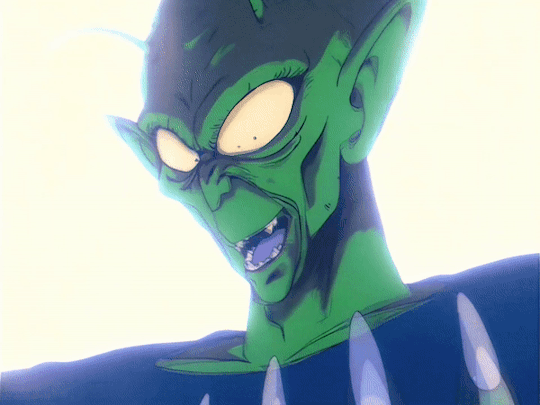
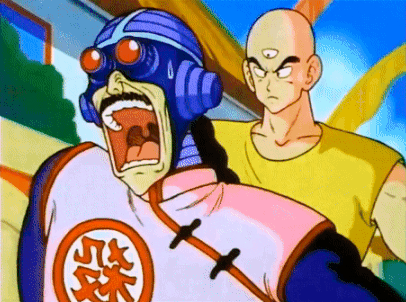
Mecha Tao
Yup, the best villain in all of Dragon Ball also did this first.
Eat your heart out, Frieza.
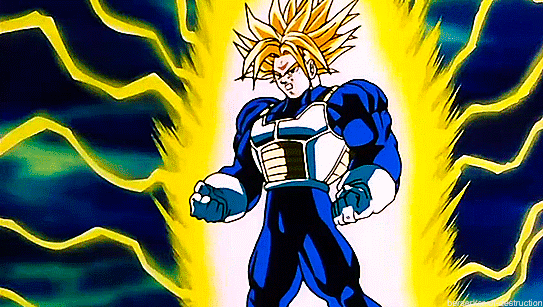
Muscle Bottom Trunks
This is where Super Saiyan and its myriad iterations (including "SS2" and whatever you nerds call the version Goku and Gohan have when they emerge from the Room of Spirit and Time) would go, but I decided to choose just my favorite one instead.
I think this transformation has over half a dozen names: Super Saiyan Third Grade, Super Saiyan 1.5, Super Super Saiyan, Ultra Super Saiyan, lmao jesus christ, Power-weighted Super Saiyan, Power stressed Super Saiyan Bitch Super Saiyan, and somehow the list just keeps going on. But what I like most about it is that everyone can do it.
Well not the Super Saiyan part, you have to have a little bit of Saiyan in your brainpan to do that, but the getting big. Doing so makes you stronger, but also so much slower that the difference just doesn't matter (for those of you that just watch youtube videos, and don't read the fucking comic). Frieza is such a useless he/they thembo that he also mistook it for a legitimate transformation against Goku on Namek. Y'know, his 100% (this time for real guyz).
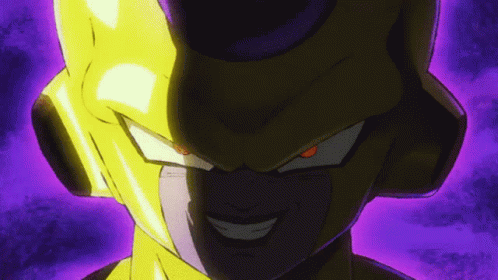
Golden Fuuureeeza
I railed against lazy recolors in my worst transformations list, but Frieza is the physical embodiment of sloth and affluenza. He was the strongest being in the universe by far barring an ancient alien prophecy for fucking decades. And what does he do with all that power? Well, ride around on a rascal scooter, of course, while sending endless swathes of Appule's to do his dirty work. Instead of lifting a finger for an hour and then being immortal FOREVER.
And that's why it works for me in all the ways Resurrection F didn't. He's supposed to be stupid and ostentatious. Dragon Ball Super writers, you're NOT.
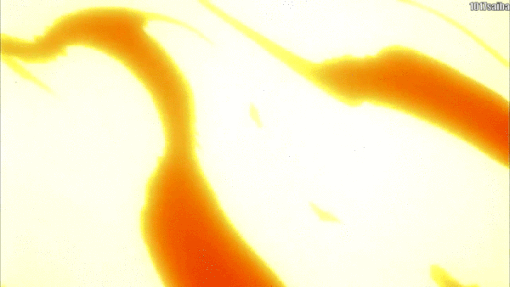
Janemba
Frankly, this is the biggest glow up in Dragon Ball history. From lazy Buu clone to, well, admittedly a lazy clone of another great character. But he has a sword! And that moveset. And it's an actually good filler movie in which Hitler dies (again).
Just look at him
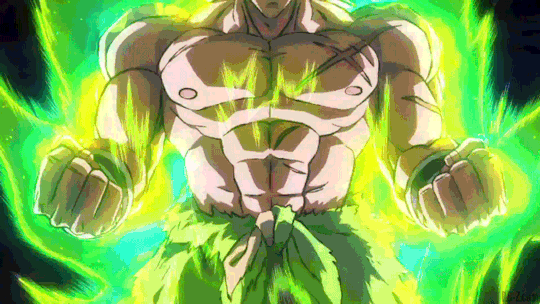
Legendary Super Saiyan
Why is greenish Super Saiyan soooooo coooool??? Well, I'll tell you why.
It's because it just is. Super Saiyan? Actually so cool. Green? Such a good color Victorian aristocrats were willing to kill themselves using a shade of it that contained arsenic. It was basically their version of Oceangate, but they all did it! We could only be so lucky nowadays. And the lore implications? Mmm, yeah. Yeah!
You see, in canon Goku did a little prophecy, but Toriyama can't help but be a great writer, so instead of just being the generic Chosen One a la every bad shonen we all know and love, he's not. He's just not. Goku, Gohan, Vegeta, Trunks, baby Trunks, baby Goku, they all do it too. Turns out, Super Saiyan is something each and every Saiyan can do. And then filler happens, Broly shows up, and everyone sees that this is because he's the real Chosen Boy.
And he's green! And we all loved it so hard we got a quality version a century later in the form of Super Broly The Movie
Nice. That's history for you.
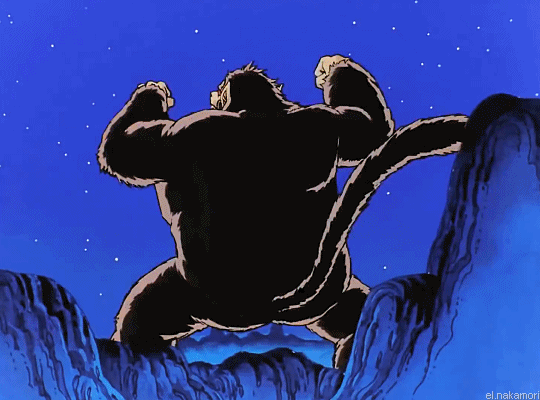
Great Ape
The OG. Look at this trendsetter. If this isn't the second best, what is? You're wrong.
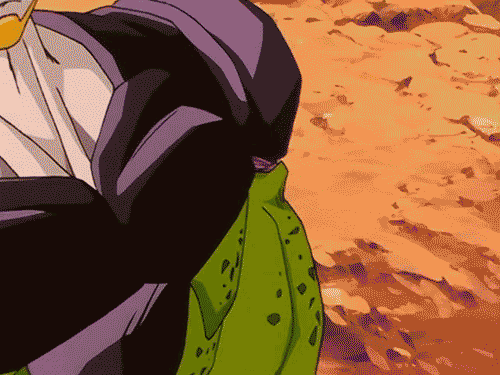
Perfect Cell
It's perfect
#dragon ball#dragon ball z#dbz#dragon ball super#Piccolo#king piccolo#mercenary tao#tao pai pai#trunks#future trunks#broly#ozaru#perfect cell#frieza#golden frieza#roshi went muscle twink as well#but he actually used it well#janemba#great ape#oozaru
21 notes
·
View notes
Text
Motorola Edge 60 Pro Specifications And Availability

Customers may explore their inner and outer worlds more than ever with the Motorola Edge 60 series. Motorola Edge 60 Pro and Edge 60 can handle any profession or passion with their unique design and expressive skills. Motorola's first quad-curved design in this market segment with vibrant colours and textures, the most advanced edge device camera system ever with four pro-grade cameras, industry-leading durability standards, and new Moto Artificial Intelligence features that make daily life smarter, more effective, and more natural make both gadgets exciting.
Comfortable quad-curved design
The Edge 60 series' ultra-thin, continuous quad-curved design is pleasant to grip for long durations. New textured backings and gentle, curved edges give it a patterned look. The Motorola Edge 60 Pro sparkles with Pantone Shadow, Dazzling Blue, and Sparkling Grape. It has leather- and nylon-inspired finishes. From modest to vibrant shades, these trendy picks are conversation makers and suit a range of personalities.
Motorola Edge 60 is worth another look with its canvas- and leather-inspired PANTONE Gibraltar Sea and Shamrock finishes.
Like electronics, these innovative materials are attractive and durable. Both gadgets have top durability standards. MIL-STD-810H certification protects against extreme temperatures, 95% humidity, high altitudes, and 1.5-meter falls, whether rock climbing on vacation or dropping a phone on the way to work. The smartphones also include IP68/IP69 certifications and Corning Gorilla Glass 7i5, giving the finest protection against sand, dust, dirt, high-pressure water, and 1.5 meters of fresh water for 30 minutes.
Pro-grade photography for visual storytelling
Motorola Edge 60 Pro and 60 use technology and software to take great images. Day or night, four professional-grade cameras ensure every close-up or distant view matches consumers' expectations. Because advanced software eliminates guessing, customers can point and shoot for high-quality photographs. The Sony LYTIA 700C sensor in the 50MP main camera system offers brighter photographs in any lighting. Short blur-free intervals are due to OIS and 32x more focussing pixels in omni-directional all-pixel focus. The 50MP ultrawide angle lens lets users capture a huge group of friends, a city skyline, or snow-covered mountains, while the 10MP telephoto lens takes clear, detailed distant shots. Users may view the scene clearly from three times away with the Motorola Edge 60 Pro optical zoom, and fifty times closer with Super Zoom. The telephoto lens assist creates realistic photos that highlight a subject's features and more. Users may use the phone's 50MP front camera to capture impromptu selfies. Moto AI and Photo Enhancement Engine work together to improve quality, reduce noise, and refine details beyond hardware. This displays every image as it appears in real life. These candy bar phones are the only ones to achieve this certification, and their cameras meet Pantone Validated colour and SkinTone Validated requirements. With Ultra-HDR, material may be more bright and colourful. The Motorola Edge 60 Pro's AI-powered features let photographers finish their shots faster while playing with contrasts, themes, and angles: Group Shot automatically blends multiple frames in one second. This ensures everyone wants nice photos. Video quality enhancements include audio, colour, exposure, and clarity.
Moto AI enabled magical interactions
Moto AI is becoming a proactive, observant partner and improves camera experiences and daily duties. The Edge 60 series will include advanced moto AI prompts. Pay closely and remember that consumer input modified these. This information also affected how users used the Moto AI Edge 60 Pro, creating some of the most intriguing experiences. Next Move is a real-time suggestion system that recognises an itinerary or recipe on a user's screen and suggests next steps. They may use Playlist Studio to make a playlist based on the recipe they're seeing, store important information, or use Image Studio to create an image, avatar, wallpaper, or sticker inspired by their next trip. Smart Connect with AI lets users start a multitasking hub, broadcast to a TV, or mirror to a PC or tablet with a voice or text command like “show me this on my TV.”
Films with long battery life
Larger, sharper screens allow people to fully immerse themselves in their passion projects. To enhance content and details, the Edge 60 series has a 6.7" pOLED quad-curved display, Motorola's brightest and most dazzling. The on-screen activity highlights the user's current hobby, whether it's a new TV show or a topic they're researching. Pantone SkinTone Validated display and colours authenticate this information and people with varied skin tones. Users may utilise Dolby Atmos for immersive sound with these visuals. Customers changing activities or places don't worry about finding a power outlet. DXOMARK awarded the Motorola Edge 60 Pro the Gold Label and the highest smartphone battery score for its excellent battery life and charging. With 90W TurboPower charging and a 6000mAh battery, the Motorola Edge 60 Pro charges in six minutes. Additionally, 15W wireless charging provides maximum power and independence (wireless charger supplied separately). In addition, the efficient MediaTek Dimensity 8350 Extreme CPU powers on-device AI, fluid gaming, high-resolution videos, and more. Motorola Edge 60 has no power problems.
Its massive 5200mAh battery and 68W TurboPower rapid charging, which powers the day in eight minutes, enable recording, producing, sharing, binge-watching, and socialising.
Ecologically friendly fashion accessories
Moto Things may be linked to Motorola Edge 60 Pro and Moto Edge 60 to stay informed and complete a wardrobe. Moto buds loop, Motorola's latest earbuds featuring Swarovski crystals and Bose Sound. This set is ideal for those who desire superb sound without sacrificing style or comfort. With fitness assistance, the Moto Watch Fit works with most Android devices. These enhancements allow users to enjoy great music while monitoring their health and daily routines. Motorola Edge 60 Pro Release Worldwide release of the Motorola Edge 60 Pro occurred on April 24, 2025. World-wide availability Along with Europe, Asia, and Oceania, the phone is now available in the UK. It won't be available in the US. India availability India will soon get the Motorola Edge 60 Pro. Motorola India lists it on its website. Flipkart teases an online release. Before April 2025, India's debut date and selling details are expected.
#MotorolaEdge60Pro#MotorolaEdge#motoai#ArtificialIntelligence#MediaTekDimensity8350#MotorolaEdge60#News#Technews#Technology#Technologynews#Technologytrends#govindhtech
2 notes
·
View notes
Text
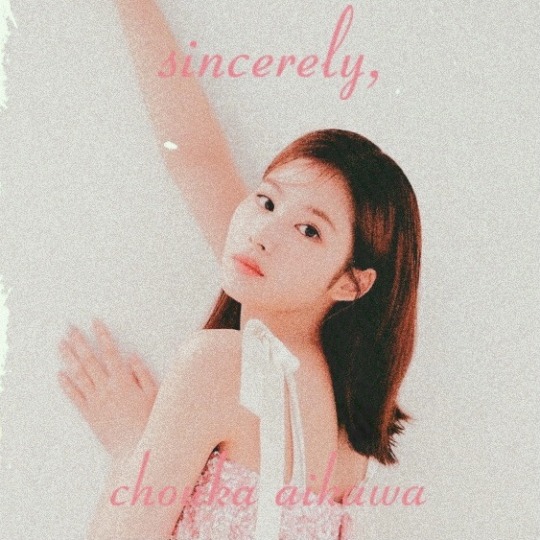
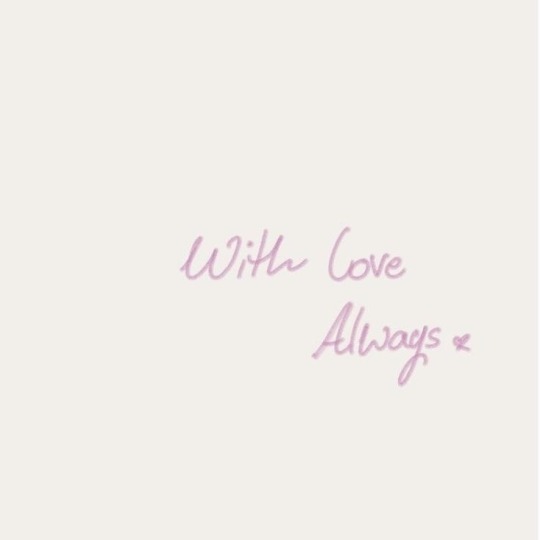
THE FIRST ALBUM … ˗ˏˋ ꒰ ♡ ꒱ ˎˊ˗
SINCERELY is the debut album by CHOUKA AIKAWA. Released on July 26th, 2024 by Republic Records, it has since been hailed as one of the best and most unexpected debut albums of the year. The album’s concepts, subject matter, and even packaging were all praised by critics, and its release cemented Chouka as one of the industry’s newest pop princesses.

TRACKLIST … ˗ˏˋ ꒰ ♡ ꒱ ˎˊ˗
GIRLS DON’T CRY
CAKE
SINCERELY ! LEAD SINGLE
EYES ON ME ! SECOND SINGLE
LUXURIOUS
RETURN TO SENDER ! BONUS SINGLE
SILK ‘N DIAMONDS
CELEBRITY
VALLEY OF THE DOLLS
STRAWBERRIES AND CREAM ! THIRD SINGLE
G.O.Y.D (GIRL OF YOUR DREAMS) ! FOURTH SINGLE
HEART ON MY SLEEVE

PHOTOCARDS … ˗ˏˋ ꒰ ♡ ꒱ ˎˊ˗
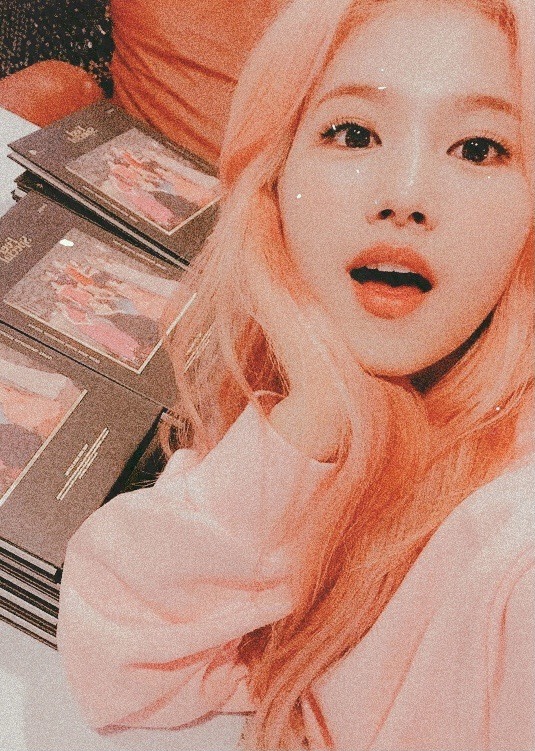

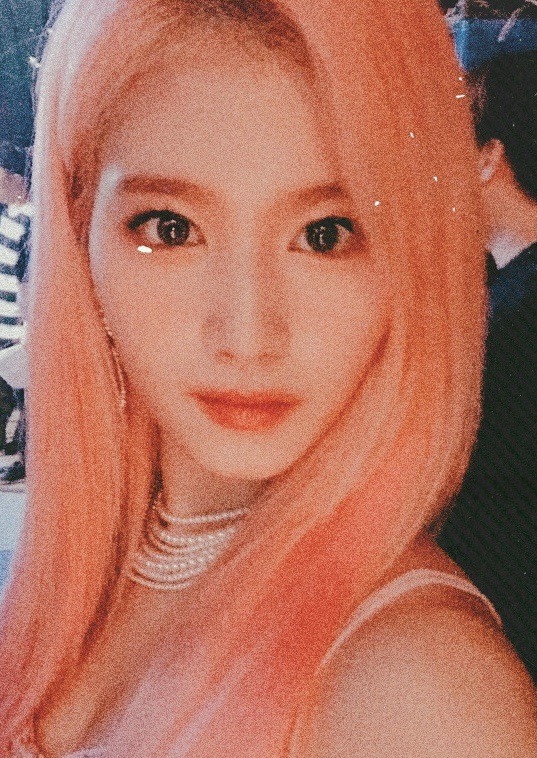
COMMERCIAL PERFORMANCE … ˗ˏˋ ꒰ ♡ ꒱ ˎˊ˗
Album of the year! Chouka truly brought girly pop music back, and everyone agreed. Sincerely—like her debut single—was a huge success. The album was announced just a month prior to its release through a video Chouka posted to her social media accounts. It featured her writing a link onto a pink card before signing it, and the same link could be found in the captions of each post. Turns out, it was a link to preorder the album. At around the same time, Chouka’s website was updated with the link, along with the album’s title and cover art.
Now this news went viral, with the term “she’s releasing an album” being Tweeted over 500,000 times. Within a week, Sincerely had garnered over 400,000 preorders, and it had hit over one million by July.
Three weeks prior to the album’s release, Chouka posted a silent video of herself in a studio in Sweden, along with a few-second snippet of one of the instrumentals to her album. The post gained over 3.5 million likes within the first 24 hours, and it garnered over two million views on Twitter.
The album’s title track and lead single, “Sincerely,” was released a day before the album dropped. Like Chouka’s debut single, this song was also a massive hit. The music video—which was shot at the Palace of Versailles and inspired by Marie Antoinette (2006), the fashion of Rococo-era France, and Madonna’s VMAs performance of “Vogue” in 1990—garnered over 40 million views within the first day, surpassing “Girls Don’t Cry.” It topped YouTube’s trending page, and topped both the Spotify and Apple Music charts. Chouka would end up breaking Olivia Rodrigo’s record, with “Sincerely” becoming the highest streamed song on Spotify in regards to first day streams.
Like its predecessor, “Sincerely” topped charts in numerous countries, and it remained atop the Oricon charts for a staggering sixteen weeks. The song was leagues more popularity online in comparison to “Girls Don’t Cry,” which—to the surprise of Chouka and her fans—led to her first No. 1 on the Billboard Hot 100. Upon the song’s debut, it had sold over 300,000 units, and would go on to sell 1.5 million by mid-September.
“Sincerely” would be praised for its catchiness and sound reminiscent of early 1990s house music, with critics calling it “the 21st century’s answer to ‘Vogue.’” The song was also praised for the carefree, cheeky, indulgent, and “I don’t give a fuck” tone that it set for the rest of Chouka’s album, despite not being the opening track.
Of course, the album’s other singles also did just as well! “Eyes on Me” was definitely a crowd favorite, with many praising its unapologetic “girlishness,” comparing it to singing alone in a pink, frilly bedroom. The song’s music video was the main talking point, though, as so many people loved the references to various nineties and 2000s chick flicks, such as: Clueless, Jawbreaker, Legally Blonde, Mean Girls, A Cinderella Story, Uptown Girls, and 13 Going on 30.
“Eyes on Me” would debut at No. 2 on the iTunes chart and No. 5 on the Billboard Hot 100, but it would top charts everywhere else, including on the Billboard Hot 100 Excl. US chart. It stayed on the charts for four weeks before falling off completely.
“Strawberries and Cream” debuted at No. 11 on the Billboard chart, unfortunately not cracking into the Top 10. “G.O.Y.D” fared much better, however, debuting at No. 8 on the chart. Like before, both songs entered the Top 10 in other countries outside America.
The cherry on top was the music videos, though. They were all filmed to appear as if they were their own individual short films, all connecting to form an overarching story about love and relationships. “Sincerely” begins with Chouka writing a love letter to someone and preparing to send it off. “Eyes on Me” starts with her slipping the letter into a mailbox. “Strawberries and Cream” deals with her receiving a letter back, but it turns out to be a rejection, which causes her to tear the letter up (it turns out to be a fake version of the letter). “G.O.Y.D” (which was notably inspired by various Old Hollywood films such as Gentlemen Prefer Blondes, Funny Face, and Breakfast at Tiffany’s) has Chouka convincing herself that she doesn’t need a man and that her crush missed out, and she writes a scathing letter in return, but in the end, she decides to not send it.
Critics were in love with every MV, and Rosettes were all down Twitter absolutely singing their praises. They were praised for their clearly expensive visuals, along with the movie style cinematography, themes, aesthetics, and overall story. Each MV broke into the Top 10 of YouTube’s trending page, and each obviously received millions of views (unfortunately, though, “Strawberries and Cream” had the least).
Overall, the album was a resounding success. Fans were unsure if the praise that “Girls Don’t Cry” received could be sustained with the release of an album, especially since it was a larger project that Chouka had never tackled before. Clearly, though, she had surpassed everyone’s expectations. And, of course, Rosettes were thrilled that she finally got that No. 1 single.

STYLING … ˗ˏˋ ꒰ ♡ ꒱ ˎˊ˗
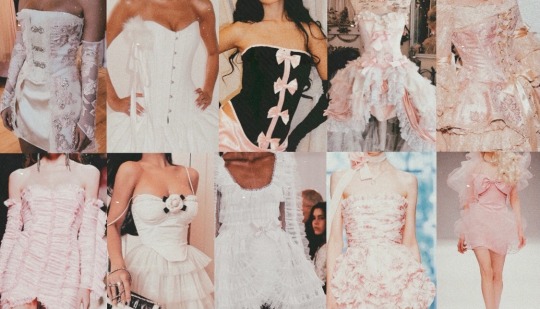

ERA HIGHLIGHTS … ˗ˏˋ ꒰ ♡ ꒱ ˎˊ˗
Girl this era was everything!
First off, the promotion for this album was heavy. Y’all thought “Girls Don’t Cry” was huge? Well, damn, this blew miss girl out the water!
Chouka was all over televisions across America, and in other countries, as well! She had an interview with Kelly Clarkson (again), she was on GMA, she was on The Zach Sang Show, she did the Buzzfeed puppy interview, she did a “What’s In My Bag” with Vogue Japan (again!), she had five hundred magazine interviews … like girl, Chouka was doing it all!
She performed on TRL for the second time, and that was just a precursor to all the award show performances that she would give.
You know how Chouka didn’t get a chance to perform at Coachella because she only had two songs to her name at that point? Well know she has twelve, and she scored a set at Lollapalooza!
She had such a blast, girl. Like the way Rosettes turned out for her was truly insane … like to the point where she was tearing up onstage. And that barely happens! She had so much fun during her set, though, especially since the fanchants were so loud and her costumes were so good! She also performed on the same stage as Melanie Martinez, so of course she got to meet her!
And of course Chouka had to do overseas promo too! Her first stop was Japan, so she was on Music Station again, she had a cute little photoshoot with Marie Claire, and she also appeared on her first variety show! Her episode was so fun like literally she’s so charming.
Japanese Rosettes have mutually decided that every time she has a comeback, they have to organize a café pop-up. So that’s exactly what they did!
Like last time Chouka went, she signed some autographs and took pictures … just had a great time!
Chouka made a stop in Korea again! We cheer! Although her music show appearances were (once again) limited, as she only performed four times, she still got to meet so many idols! They were all down her TikTok doing the “#SincerelyChallenge,” and some of the most notable were Julie from Kiss of Life, Xiaoting and Bahiyyih of Kepler, Chungha, literally every member of Haute Pink (@hauteplnk), and Baebi and Sena of Venus (@venusvity)! Additionally, she also held another fansign! Over 13,000 fans attended this one, and Chouka received so many gifts! Like literally, the back wall was covered in bouquets and pink gift bags by the end.
She had another photoshoot with Céci (she was literally on every magazine cover this era) and shot a campaign for Etude House while there, and she was supposed to appear on Knowing Bros but couldn’t due to scheduling conflicts … sigh.
However! There was news going around that Chouka had agreed to star in an upcoming drama! Rumor has it that her co-star is supposed to be Cha Eun-woo so!
Chouka was also in Brazil for Lollapalooza, too. And the vibe was even better in comparison to the US sjuwjhdhe. Like Brazilian Rosettes absolutely adored her, and her Portuguese was surprisingly good! She just had an absolute great time … she was even doing football chants with the crowd too like we love her!
After she came back to the US, she went straight to award shows. She first went to VMAs, and girl, she was literally that girl of the night. Like she was wearing pink archive Versace! She looked so good on that carpet, and she stood there and posed for so long that Jason had to drag her away jsjwjjsjs. It’s not her fault that the photographers were hyping her up!
Chouka was actually a co-host that night, and she presented an award, so rest assured that she was changing outfits like eight times. And they were all in shades of pink, ofc! She also won her first music award ever, as she won the award for Best Pop!
Like girl she beat out Taylor Swift, Ariana Grande, Olivia Rodrigo … Rosettes were on Twitter yelling!
Her performance was towards the end since of course the VMAs had to extend their watch time (every time Chouka appears on something Rosettes will literally flock to watch it), but when it happened? Oh, the girls were simply not ready!
Taking heavy inspiration from Madonna’s 1990 VMAs performance of “Vogue,” she had Marie Antoinette written all over her. The performance first started with an extended intro of “Sincerely,” and with male backup dancers performing vogue-style choreography. They suddenly stop and bow, and Chouka comes out from backstage with four female dancers (her court, of course). Her hair is piled up high and powdered pink, and she’s dressed in this absolutely huge, Rococo-era gown! Unlike Madonna’s “Vogue” performance, though, after the start of the first verse, Chouka rips off the skirt to reveal a shorter one!
Like “Girls Don’t Cry,” subtle costume changes were very common this era, along with Chouka’s use of paper fans for every live performance. And speaking of fans, every time she did the “#SincerelyChallenge” with someone else, she would give them a fan, too! And they got to keep it as a gift. ♡
She next went to the AMAs and had a great time (won New Artist of the Year, too!), and she even got a chance to attend the MAMAs! She performed at the ceremony in Japan and had a killer dance break, and she was also reunited with Haute Pink again! They were sat next to each other at the ceremony in Hong Kong, and they were chatting the entire night. Chouka is truly their secret seventh member at this point.
The last thing Chouka did before her tour started was attend Jingle Ball! Of course, like every time before, she had fun! Rosettes turned up in droves, and they even got a little gift bag as thanks. Although not all of them got something because Chouka’s team underestimated how many people were actually going to be there … but at least there was a handwritten letter in there!
She was supposed to attend New Year’s Rockin’ Eve, but she wanted to rest before her tour. And also she spent New Year’s in London so she wouldn’t have been able to go anyways sjiwjsjjd.
Her tour (which was titled the Return to Sender Tour and girl, people noticed that!) started at the beginning of next year, and unfortunately, it was pretty short and limited only to North America, Asia, and parts of Europe (including Italy, luckily). Despite that, though, it was a cute and fun little tour! Chouka actually sold out every show on her roster, which was surprising to her but unsurprising to everyone else. Like yes, girl, people do like your music!
Now after Chouka’s tour ended, Rosettes thought that was it. However, nothing’s ever it for her snjwjjeje like y’all should know this by now!
“Return to Sender” (the tour was named that for a reason!) was released as a bonus single sometime in March, and everyone ate it up. They were so invested in the lore at this point, and since the letter Chouka ripped up in “Strawberries and Cream” was revealed to be a fake in “G.O.Y.D,” they were all wondering what happened to it! And Rosettes could finally breathe a sigh of relief since they finally got their answer.
In “G.O.Y.D,” Chouka was trying to convince herself that she didn’t need a man, but in “Return to Sender,” she knew she didn’t need one! As the title implies, in the MV, she literally sent the rejection letter back! Like she truly did not care! It actually ends in the same boudoir that “Sincerely” started off in, and it ends with Chouka writing herself a love letter instead!
It was truly such a cute little message. Rosettes were in love with her character’s progression from being lovestruck to being unbothered and okay with self-love like we love that here!
Since we got a bonus single completely out of nowhere, Rosettes were hoping and praying that either “Heart on My Sleeve” or “Silk ‘N Diamonds” would be released as singles, too. Unfortunately for all of us, though, that literally never happened. And when I tell you Rosettes were so pissed off at her, I mean it jsiwjejjdjs.
However, “Silk ‘N Diamonds” would get its flowers in due time, no need to worry!
Like “Girls Don’t Cry,” the creation and subsequent promotion of Sincerely was all covered on a documentary, which was released on Chouka’s music channel! It was shot more professionally this time and didn’t have any personal footage by her, but it was still a great doc! A lot of celebrities made appearances (such as SZA and Taylor Swift!), and throughout the entire documentary, you can tell just how well Chouka handles stress. Truly the most admirable girl on the planet.
Jason was with her every step of the way, and we love him for that. He was always reassuring her, taking care of things for her, making sure that she wasn’t overworked … like he was literally starting to act like Chouka’s second manager and she had to tell him to slow down hshejjejs.
He quite literally has a fandom of his own within Chouka’s fandom! Like he’s so beloved to the point where every time he showed up during one of Chouka’s schedules, Rosettes would cheer for him, too!
By the end of the era, Chouka held a huge beach party in Spain to celebrate a successful era, and half the industry pulled up! Everyone had to wear pink (of course shwjjdjs), and the party literally went on to three in the morning. It was just so incredibly fun, and every guest got a signed copy of the album, a box of Dior perfume, and a rose! Some notable guests were Paris Hilton, Bella Hadid, the Haute Pink girls, and Klara of Venus!
All in all, what an amazing era! Chouka once again proved that she was the It girl, and she blew everyone’s expectations out the water. Sincerely was truly one of the best and most surprising debuts in history, and fans couldn’t wait to see what else she had in store. ˗ˏˋ ꒰ ♡ ꒱ ˎˊ˗
#˗ˏˋ ꒰ ♡ ꒱ ˎˊ˗ COME INTO THE VERSE !#˗ˏˋ ꒰ ♡ ꒱ ˎˊ˗ CHAR … CHOUKA !#DISCOGRAPHY … CHOUKA !#kpop oc#kpop oc soloist#kpop soloist#kpop solo artist#kpop idol oc#fake kpop idol#fictional kpop oc#fictional kpop idol#idol oc#idol soloist#idol oc soloist#idolverse#fake idol#fake idol oc#fictional idol oc#fictional idol community
16 notes
·
View notes